Learn everything you need to know to make light, moist, and fluffy vegan muffins with these tips and tricks. Plus, a basic muffin recipe you can customize! Then browse these 33 delectably sweet vegan muffin recipes to find the one that calls your name!
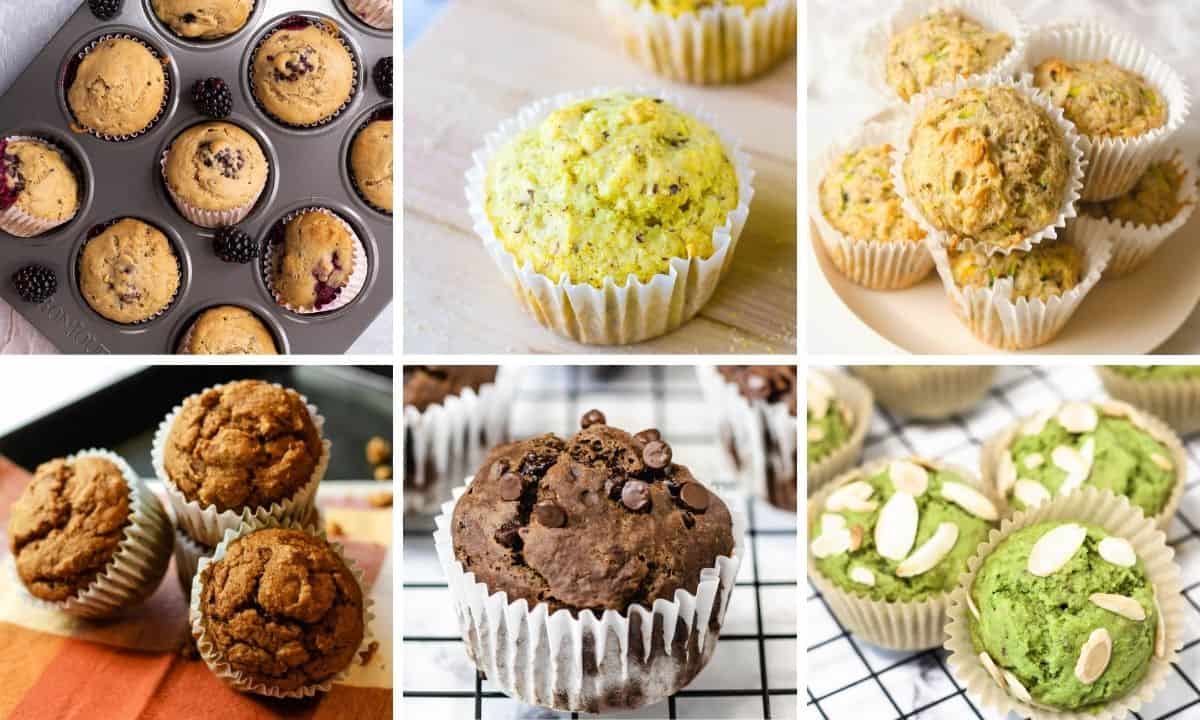
Muffins are warm, comforting, delicious, and a satisfying snack or breakfast! They are quick, easy to make, and really, just so much fun to eat and enjoy.
Jump to:
- A Brief History of Muffins
- Muffins vs. Cupcakes: What’s the difference?
- Basic Ingredients Needed to Make Vegan Muffins
- Types of Flour to Use for Vegan Muffins
- Types of Sugar to Use for Vegan Muffins
- Leavening Agents
- Oil vs. Oil Free
- How to Bake Vegan Muffins Step by Step
- Vegan Muffin FAQS
- 35 Light, Moist, and Fluffy Vegan Muffin Recipes to Try!
- More Vegan Round-Ups!
- Recipe
A Brief History of Muffins
When you say muffin, what comes to mind is very different depending on where you live.
English muffins are yeast bread that is cooked on a griddle. They date back to the 10th or 11th Century. We enjoy them here in the United States toasted with a bit of butter spread.
The type of muffin we are familiar with in America is a quick bread. Quick bread uses a chemical agent, baking powder, to rise instead of yeast. This type of muffin was first seen in cookbooks at the end of the 18th century. However, baking powder wasn’t created until 1857.
The first muffins were made using pearlash, producing carbon dioxide in the dough. The first muffin recipes were simple with few ingredients and not as sweet.
As muffin recipes have changed throughout the years, they have become sweeter, although there are also savory muffins, and they include numerous types of mix-ins.
Muffins became popular in the 1950s as brands began to box muffin mixes.
There is a wide variety of muffins out there with blueberry, chocolate chip, and banana being some of the most popular varieties.
Muffins vs. Cupcakes: What’s the difference?
There is some debate regarding the difference between a muffin and a cupcake. A few distinct differences:
- Muffins can be both savory and sweet, while cupcakes are always sweet!
- Cupcakes use a cake batter, while muffins use a quick bread batter.
- Cupcakes always have frosting, while muffins usually don’t (however they do sometimes have a glaze).
A few of their similarities:
- Both muffins and cupcakes use a mold to create a unique confection.
- They both use a batter, not a dough like other bread.
- They are small, individually packaged sweet treats.
Basic Ingredients Needed to Make Vegan Muffins
- Flour
- Sugar
- Leavening Agent
- Dairy-Free Milk
- Oil or Oil Free Alternative
- Vanilla Extract
- Fresh Berries or Other Flavorings
Types of Flour to Use for Vegan Muffins
These types of flour are typical gluten flours that you will find in many muffin recipes. Gluten is a protein that acts like glue that holds the muffin together.
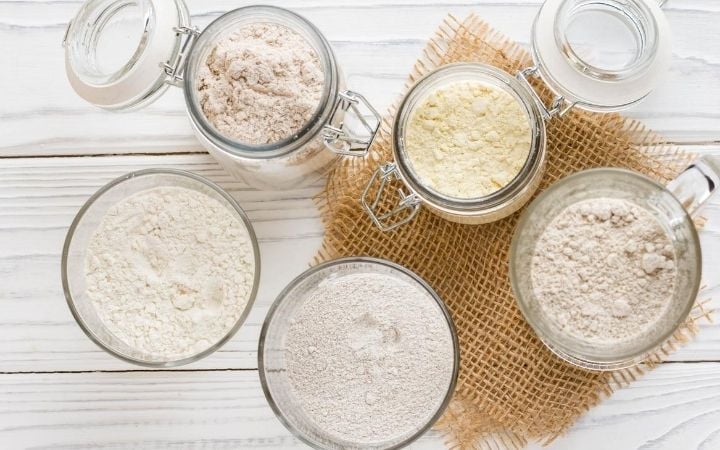
- All-Purpose Flour is a variety of flour that uses a combination of hard and soft wheat. It comes both bleached and unbleached. Unbleached is recommended because it provides more structure for baking recipes. This type of flour has been processed to create a fine texture. It is the most common type of flour used in baked goods.
- Pastry Flour makes baked goods lighter and fluffier than all-purpose flour. It is often used to make pastries, cookies, and pie crust.
- Whole Wheat Flour is ground from e grain. All types of wheat flour are made from hard wheat. They produce a denser bake. This type of flour has added fiber and is often used in whole food plant-based baked goods for its health benefits.
- White Whole Wheat Flour is similar to whole wheat flour, but instead of using red wheat like whole wheat flour, it is made from white wheat. It bakes similarly to all-purpose flour but has the health benefits of whole wheat flour.
- Spelt Flour has a light reddish-brown color and a nutty flavor. Spelt is a whole grain, but it does not produce as dense a bake as whole wheat flour does, yet it still has the same health benefits.
Gluten-Free Flour Options
If you are sensitive to gluten, you’ll need to use gluten-free flour. Using a combination of gluten-free flour yields the best result in baked goods. Below are a few common types of gluten-free flours you’ll find used to create vegan muffins.
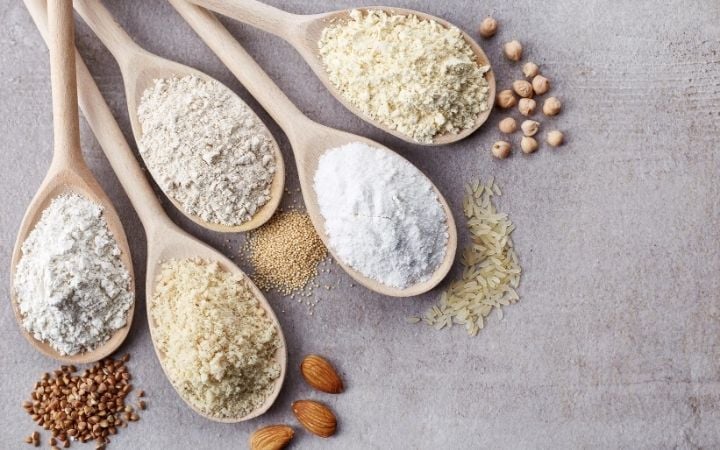
- Buckwheat flour provides a rich, earthy flavor and is good for baking quick bread such as muffins. It can have a crumbly texture. When using buckwheat flour, it is best to combine it with another flour, such as brown rice flour, to create a quality bake.
- Brown Rice Flour is made from ground brown rice. It has a nutty flavor. It is best when combined with flour in baked goods. It has a high protein and fiber content.
- Oat Flour is made from ground oats and gives baked goods a chewy, more crumbly texture.
- Almond Flour is made from blanched almonds (skins removed) and is ground into fine flour if almond flour creates a denser bake.
How to Measure Flour:
Baking is a science. As such, ensuring that your measurements are as exact as possible is essential to create the best bake.
In America, most of us use measuring cups for baking. However, using a scale to measure out in grams will yield the most precise results.
However, most American recipes don’t include the measurements in grams and instead use cups.
When measuring using cups, refrain from scooping the flour with the cup out of the flour bag. Instead, spoon the flour into the cup, and use a butter knife to level it.
Don’t shake the flour or push it down. You will end up using more flour than you need.
Should You Sift the Flour:
Some muffin recipes call for sifting, while others do not.
Sifting removes unwanted lumps and debris and helps to “unpack” the flour from the bag.
When you sift the flour with the other dry ingredients, it helps to distribute them evenly, which helps blend the ingredients.
Even if a recipe does not call for sifting, it cannot hurt the recipe.
Types of Sugar to Use for Vegan Muffins
There are so many different types of sugars out there. Other recipes call for different kinds of sugars because they will have different results on the texture of your muffins.
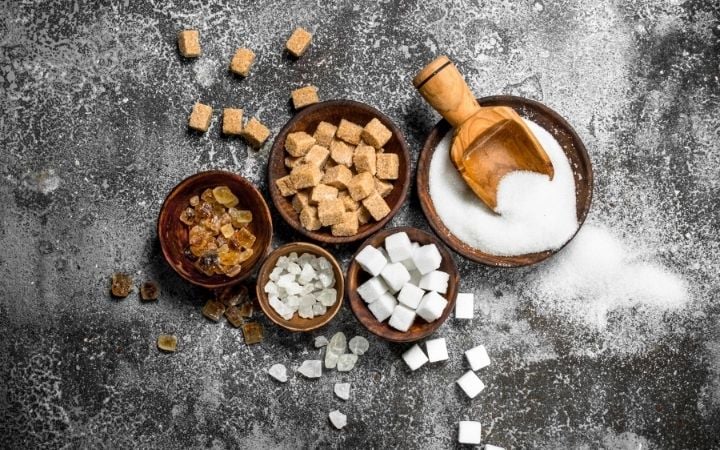
When making vegan muffins, following the recipe and using the sugar it calls for is essential. Substituting sugars will result in a different bake.
Here are some of the sugars you will often find in muffin recipes.
- White Sugar is the most common type of sugar, also known as granulated sugar. This is refined sugar that has gone through processing. If a recipe calls for sugar without explanation, it refers to white sugar.
- Brown Sugar is another common type of sugar. Brown sugar is white sugar with molasses added to it. There is light and dark brown sugar. Dark brown sugar has more molasses. When using brown sugar in a recipe, the color of the baked goods will be darker. Brown sugar gives a chewy texture and a caramel flavor. If a recipe calls for brown sugar, it is likely calling for light brown sugar unless otherwise specified.
- Turbinado Sugar, also known as raw sugar, is less refined than cane sugar but still partially refined while retaining some molasses.
- Coconut Sugar is less refined than white, brown, or turbinado sugar. It is often used in whole-food plant-based recipes as a substitute for white sugar. It is a natural sugar made from coconut palm sap. It is brown and will create a darker crumb for your muffins or baked goods.
- Muscovado Sugar is an unrefined sugar cane sugar that contains natural molasses. It is an excellent whole-food plant-based substitute for brown sugar.
Leavening Agents
A leavening agent is what allows the muffins to rise. Muffins and quick bread, baking powder, or a combination of baking powder and baking soda are used to leaven the muffins.
What is baking soda?
Baking soda is a white crystalline powder that is naturally alkaline or basic. It becomes activated when combined with an acidic and a liquid.
When activated, it creates carbon dioxide, which allows baked goods to rise and become light and fluffy.
What is baking powder?
Baking powder is a complete leavening agent. It contains both the base and the acid to create the carbon dioxide necessary for baked goods to rise. It contains baking soda, cream of tartar, and cornstarch.
Oil vs. Oil Free
Oil is a perfectly acceptable ingredient to use in vegan muffins. There are many different types of oils a muffin recipe may call for. Oil adds moisture to a muffin recipe. Your muffins will have a dry, crumbly texture without oil or an oil substitute.
Types of Oils Used in Muffin Recipes
- Canola Oil is made from rapeseed oil. There has been some controversy surrounding canola oil and whether or not it is healthy. Most canola plants are genetically modified (GMO). I prefer not to use canola oil in my baking recipes for this reason.
- Safflower Oil comes from the seeds of the safflower plant. It is a tall plant with yellow or orange flowers. Safflower oil is a good source of unsaturated fatty acids with a neutral flavor. It can be heated to higher temperatures than other oils, making it a good choice for baking.
- Vegetable Oil is a blend of different oils, such as sunflower, corn, soy, or safflower. It has a neutral flavor like canola oil and safflower oil, making it a good choice for baking recipes. However, it isn’t easy to know what is actually in this type of oil, for example, what plants and how the oil was extracted and processed.
- Coconut Oil is made by pressing fresh coconut meat or dried coconut meat. Virgin coconut oil uses fresh meat, while refined coconut oil typically uses dried coconut meat. Virgin coconut oil can be heated to 350 degrees F, while refined coconut oil can be heated to 400 degrees F. Virgin coconut oil smells and tastes like coconut, while refined coconut oil has a neutral flavor.
- Olive Oil comes from pressing the oils out of olives. There are wide varieties of olive oil, and the taste and quality can differ immensely, as well as the cost. It has a distinct flavor that can affect the overall flavor of your baked goods.
Oil-Free Alternatives for Muffin Recipes
If you prefer to make your muffins oil-free, which makes them whole-food plant-based, then choosing an oil-free substitute is essential.
- Sugar-Free Applesauce can be swapped at a 1:1 ratio for oil in most baking recipes.
- Pumpkin Puree is another fruit puree that works well as an oil substitute. However, depending on the type of baked good and the flavors you want to achieve, you may opt for applesauce.
- Banana, when mashed, creates a puree, but similar to pumpkin, add a banana flavor to your baked goods.
- Dairy-Free Yogurt adds fat and moisture to muffins and has a more neutral flavor.
- Nut Butter can also be used for oil and make a good substitute due to its fat content. Depending on the type of nut butter, you can have different results in your baking. I prefer raw almond butter in baking recipes.
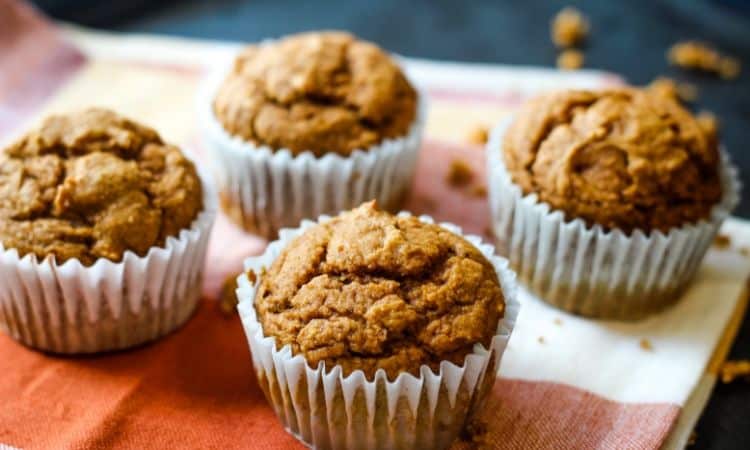
How to Bake Vegan Muffins Step by Step
Now that you know all the ingredients you need for a basic muffin recipe, here are the fundamental steps to create muffins. It is a simple and easy recipe to follow!
Step 1: Combine Wet Ingredients-Mix the wet ingredients with the sugar. Stir until the sugar is dissolved.
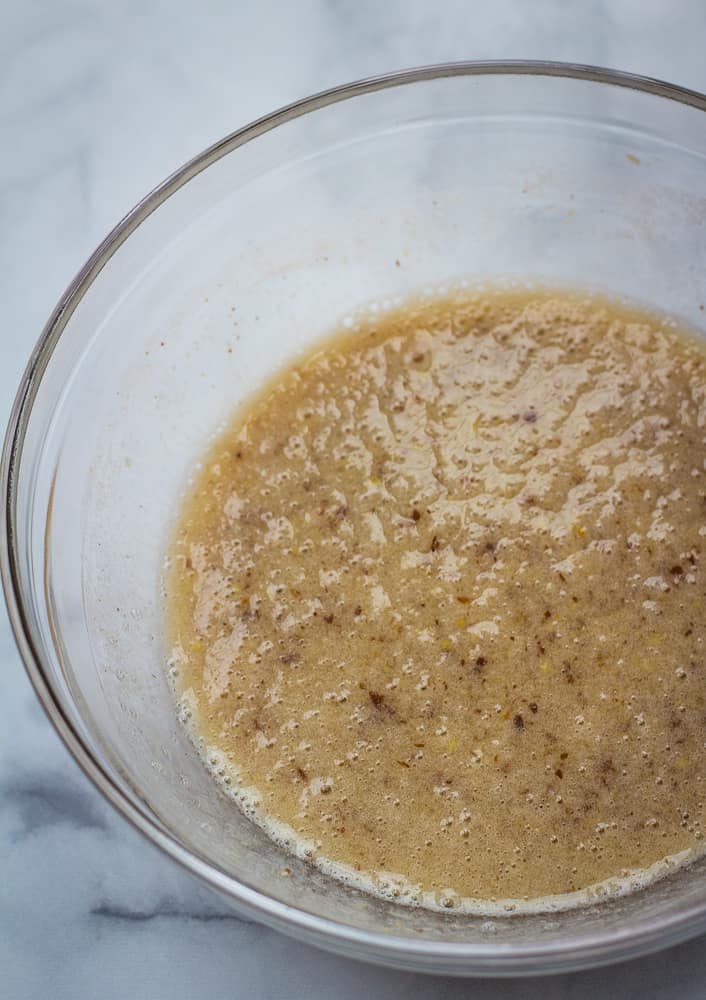
Step 2: Combine Dry Ingredients-Sift the dry ingredients, which include the flour, baking powder, and salt, and whisk together to combine.
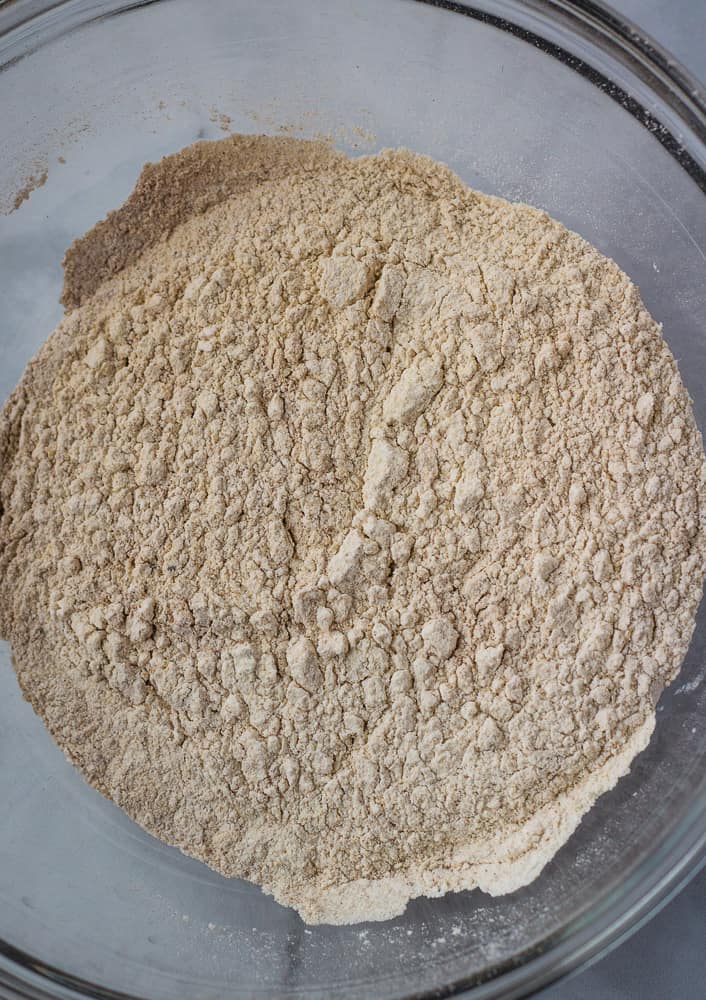
Step 3: Combine Wet and Dry Ingredients-Pour the wet ingredients into the bowl with the dry ingredients. Stir until just combined.
Step 4: Add Flavoring-Fold your mix-in or flavoring (blueberries, banana, nuts, chocolate chips, etc.)
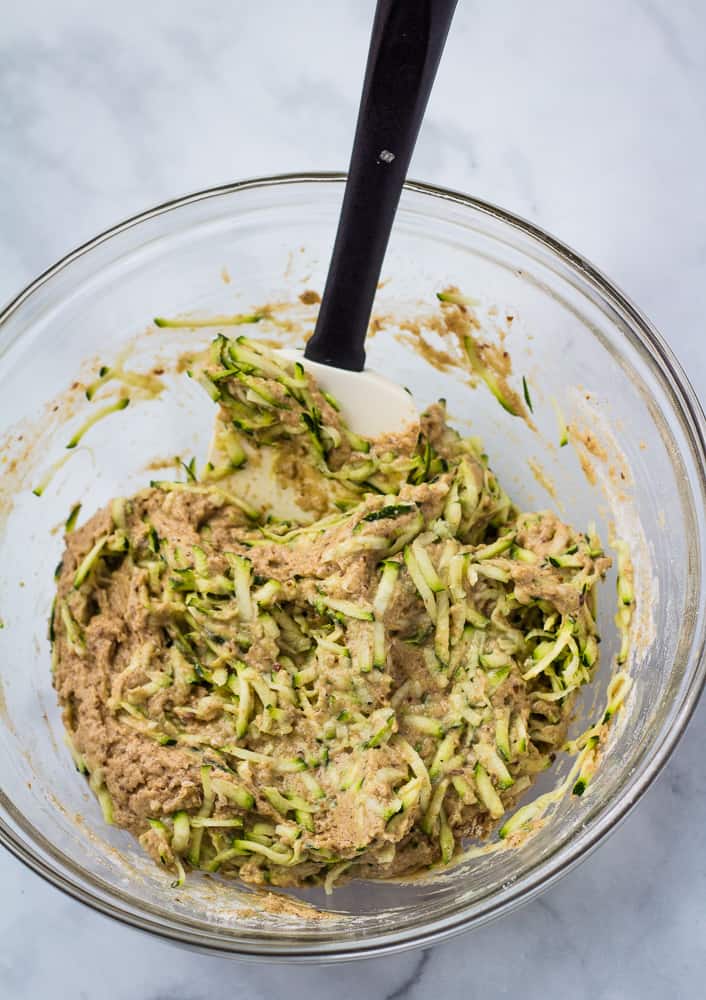
Step 5: Fill Muffin Cups-Line muffin tins with liners. Fill muffin cups ¾ of the way full.
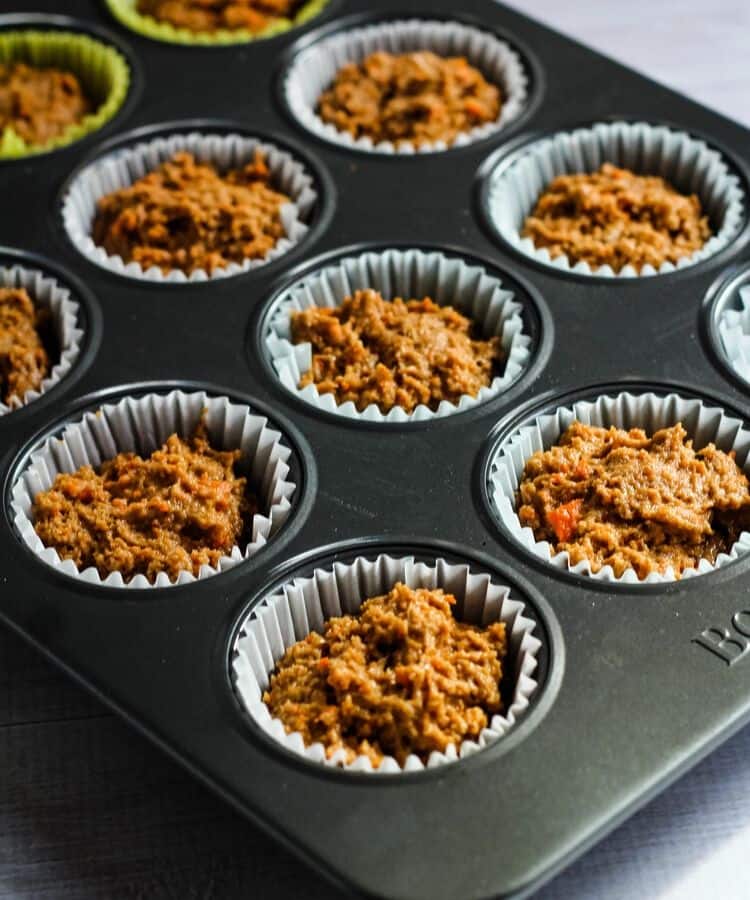
Step 6: Bake-Place muffins in preheated oven at 350 F. Bake for 25-30 minutes or until toothpick comes out clean. Allow them to cool for 10 minutes.
Vegan Muffin FAQS
Allow muffins to completely cool before storing them in an air-tight container. They will keep when stored at room temperature for 3-4 days. You can also store in the refrigerator for up to a week.
Wrap each muffin individually before placing it in an airtight container such as a freezer bag. Muffins will keep in the freezer for up to 2 months. When ready to enjoy, remove from the freezer and let thaw at room temperature.
Serve warm or at room temperature. Add a pat of vegan butter or a drizzle of maple syrup for added sweetness.
35 Light, Moist, and Fluffy Vegan Muffin Recipes to Try!
Without further ado, here are 20 spectacular vegan muffin recipes! There is a large variety, from classic blueberry and banana muffins to unique matcha and morning glory muffins.
This collection is curated by some of the best food bloggers who know what they’re talking about when it comes to baking!
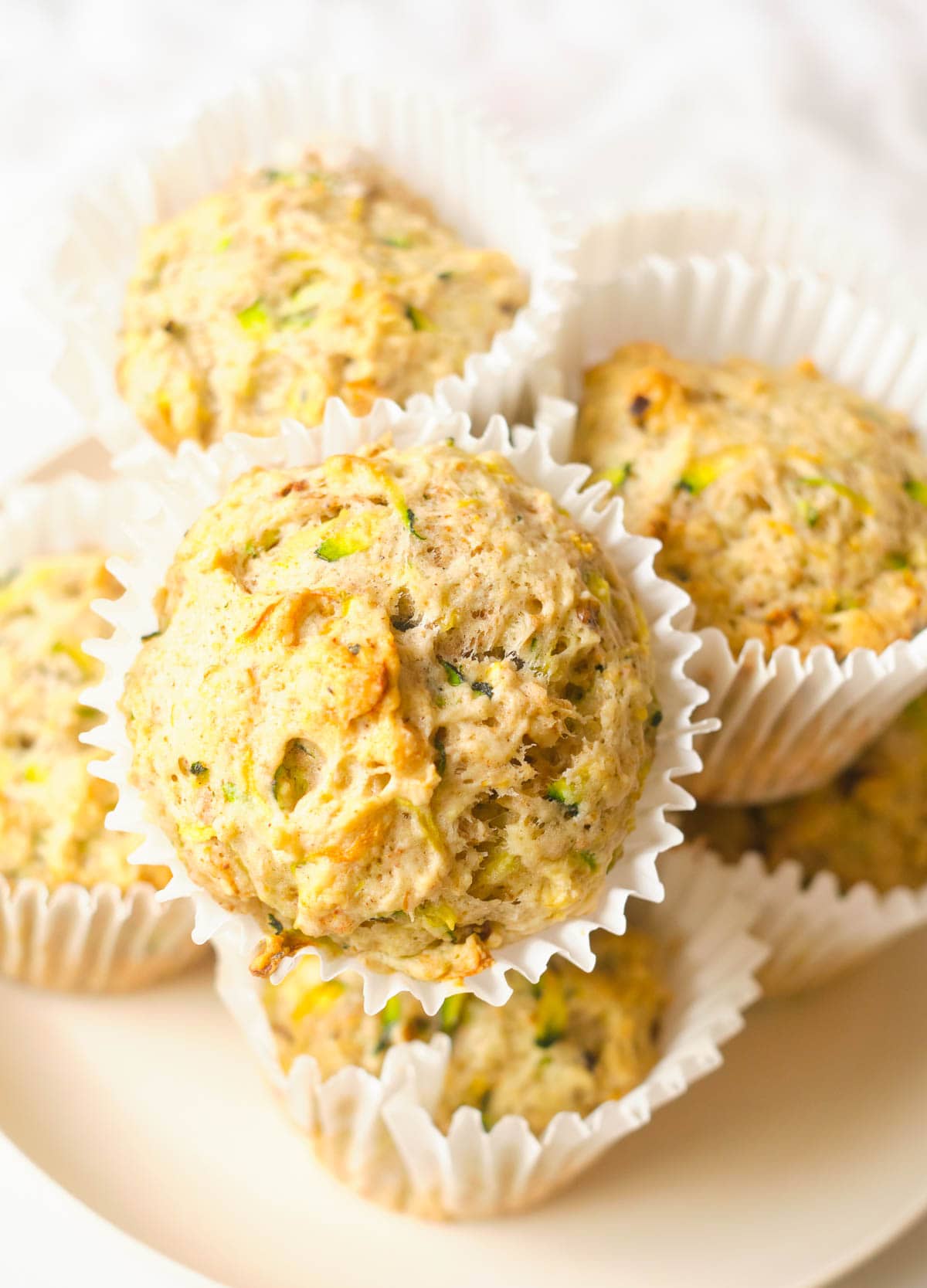
1. Vegan Pumpkin Muffins
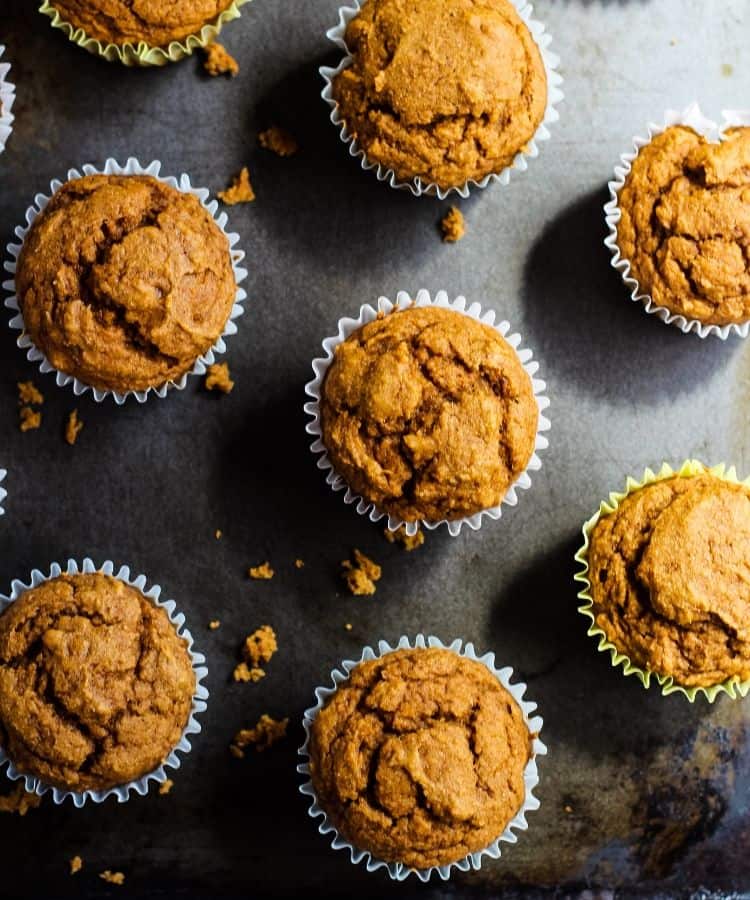
Soft and moist, these vegan pumpkin muffins are popping with warm pumpkin flavor and are sweetened with bananas.
2. Banana Carrot Muffins
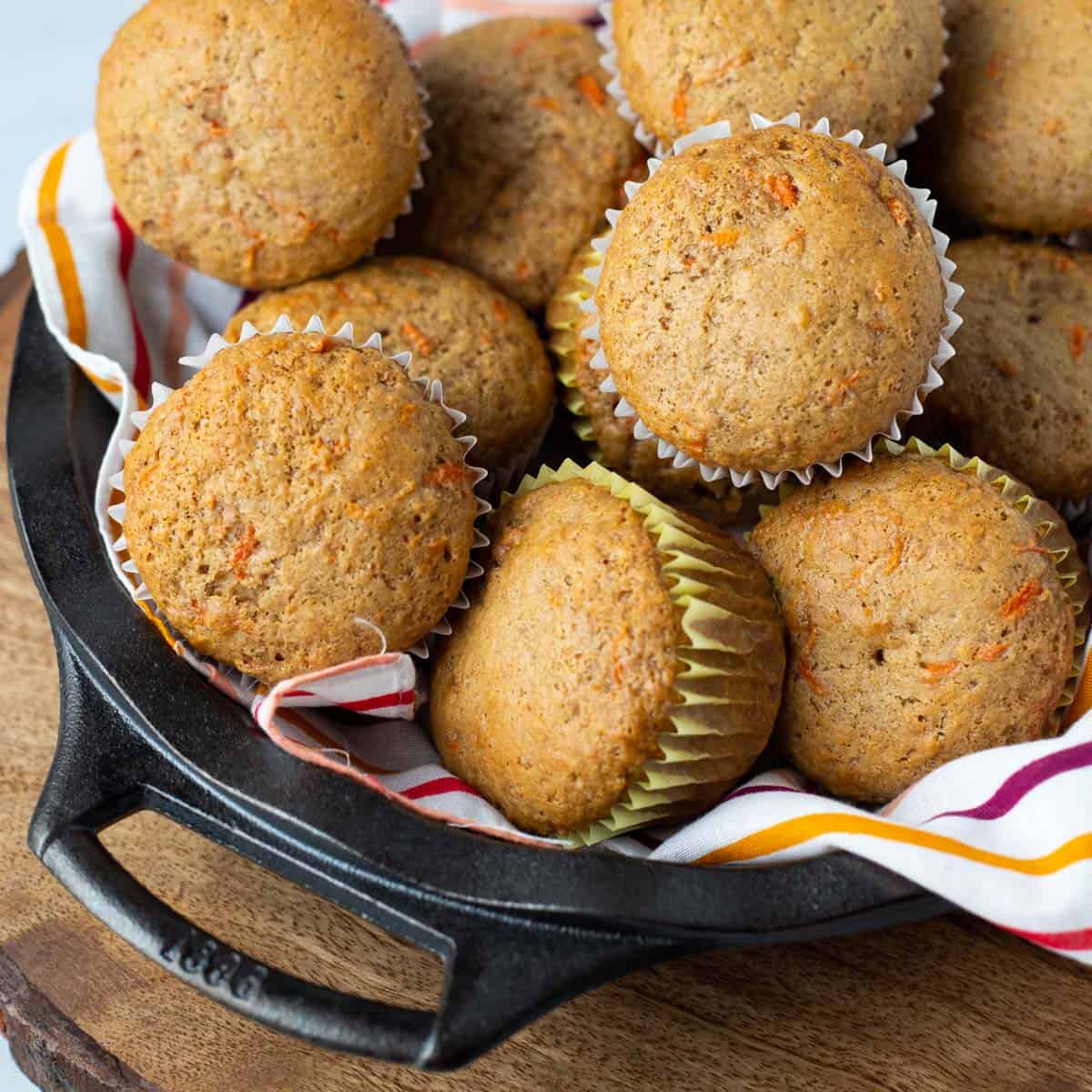
A delicious and healthy treat, these banana carrot warms are perfectly moist and fluffy. Serve topped with vegan cream cheese frosting for a real treat!
3. Vegan Zucchini Muffins
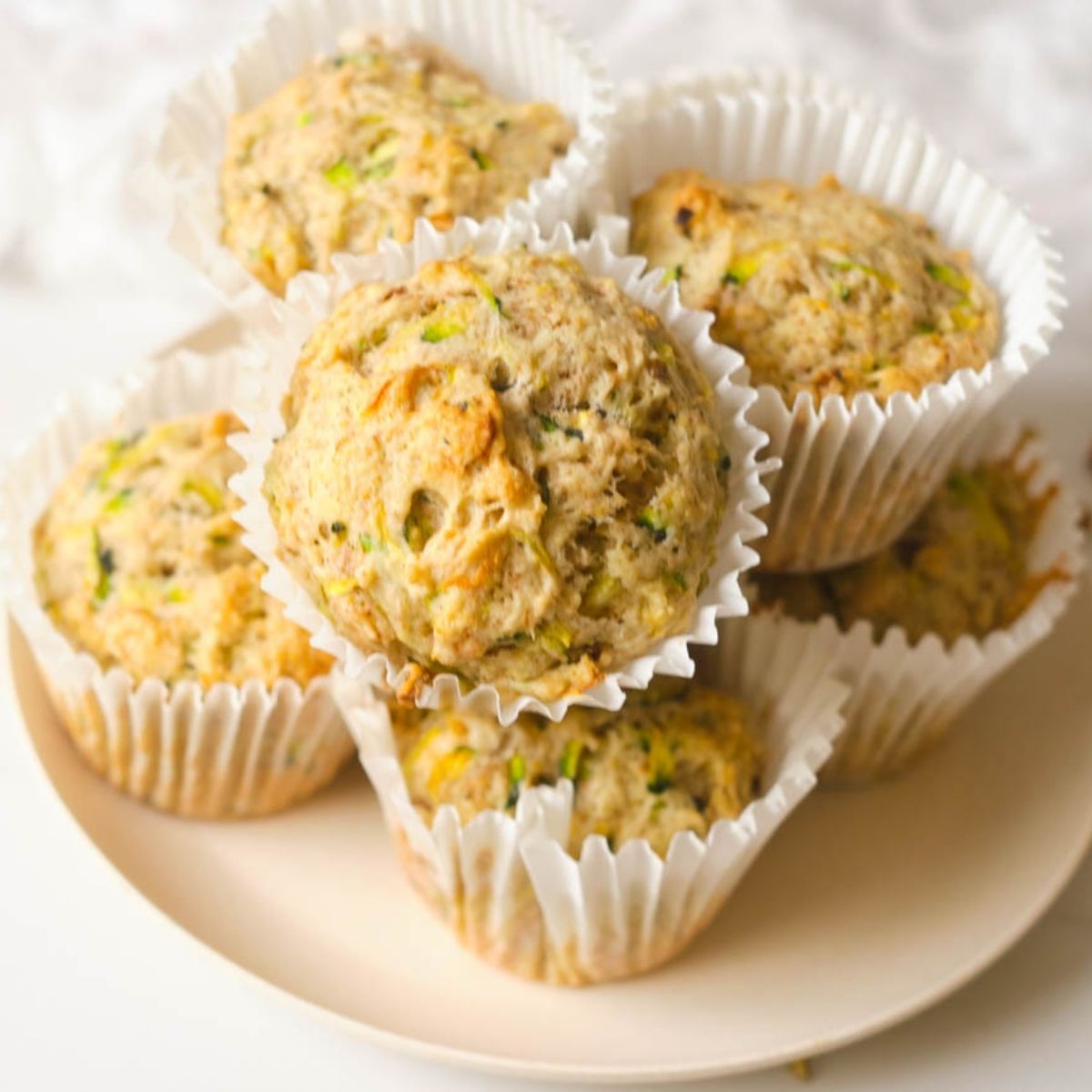
These muffins are made with whole food plant-based ingredients and are completely oil-free, yet their sweet, moist, and fluffy. They make a delicious snack or dessert topped with coconut vanilla icing.
4. Spiced Sweet Potato Muffins
Easy-to-make vegan sweet potato muffins are perfect as a breakfast, brunch, or mid-morning treat! Delicious, undetectably vegan, and easily gluten-free.
5. Healthy Banana Muffins
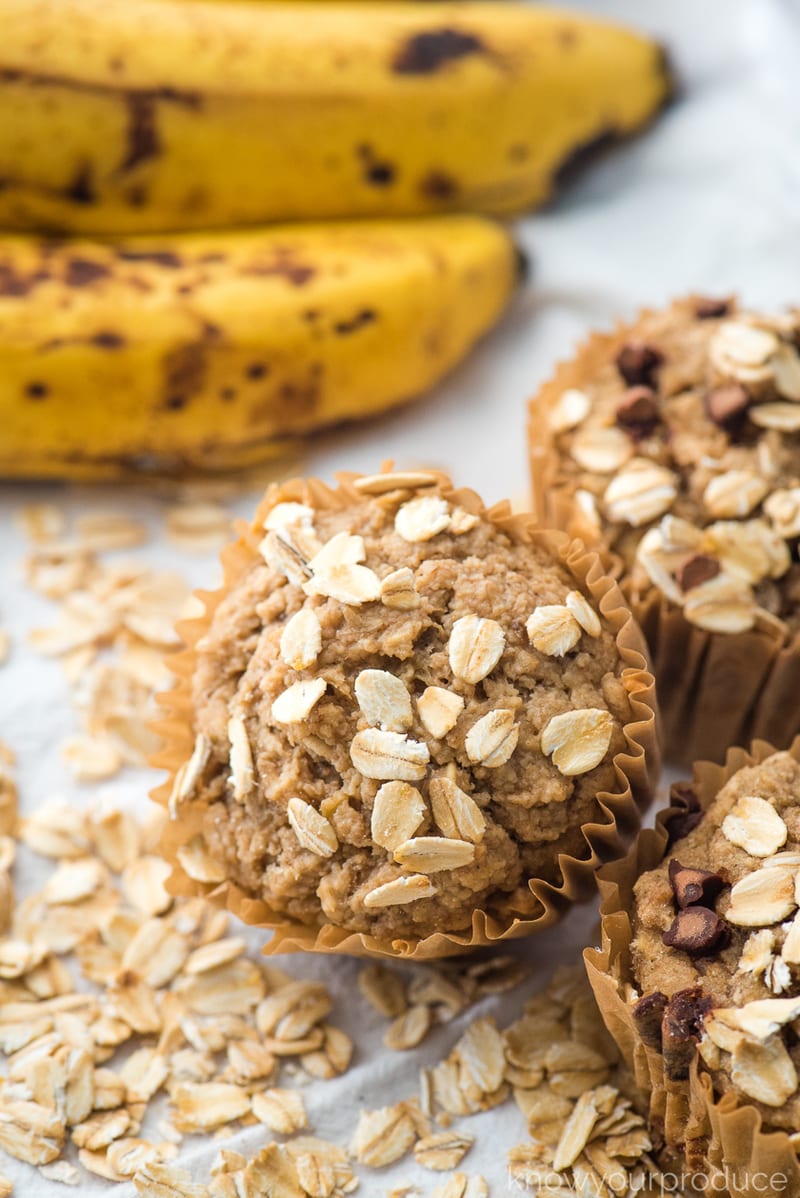
Our Healthy Banana Muffins are a great grab-and-go treat. They taste like dessert, but it’s like enjoying a bowl of oatmeal in a muffin wrapper!
6. Cornbread Muffins
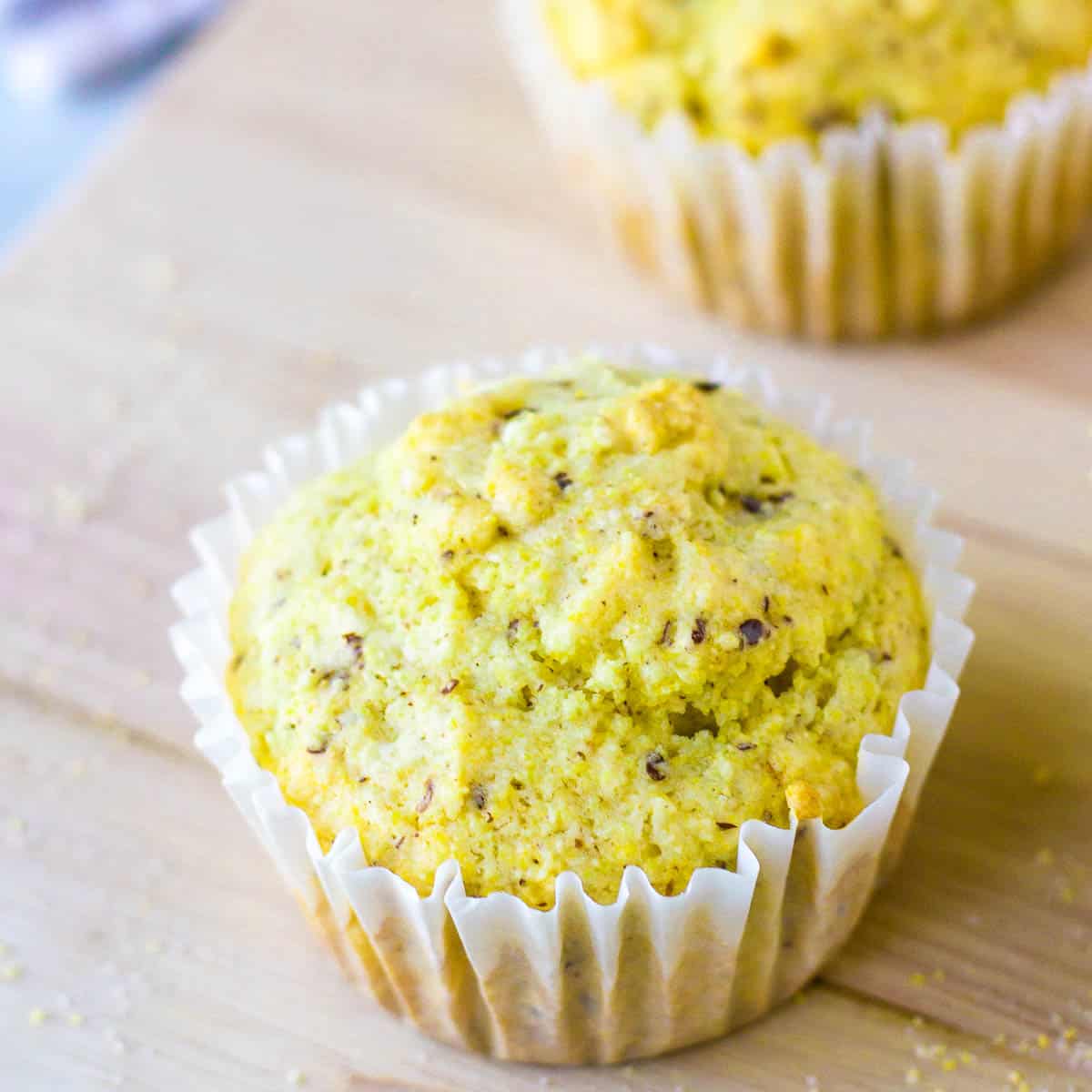
These 3-ingredient cornbread muffins have only 5 minutes of hands-on time. Using boxed cornbread mix, flax, and almond milk.
7. Healthy Apple Muffins
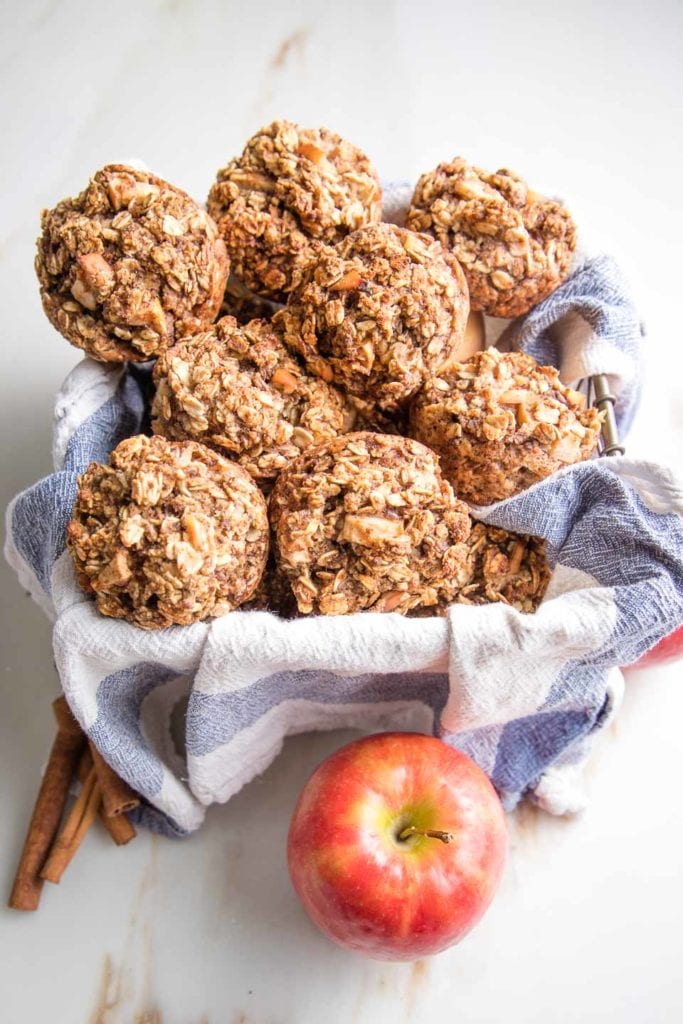
Healthy apple muffins are the ultimate grab-and-go breakfast. They’re vegan, gluten-free, and oil-free….delicious and easy to make.
8. Blackberry Muffins
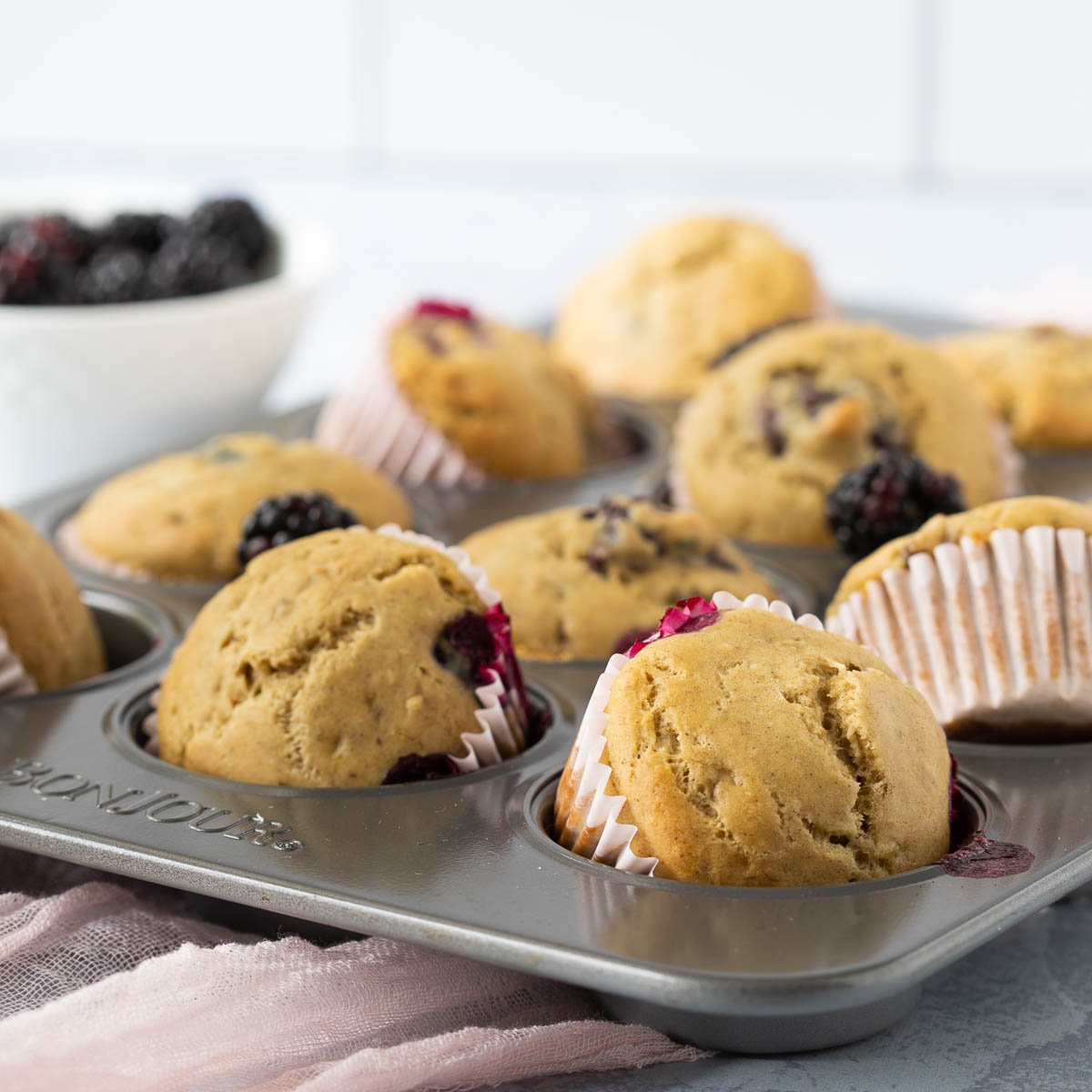
Moist and fluffy, these vegan blackberry muffins are simple to make, and the perfect breakfast, snack, or dessert! They’re oil-free, dairy-free, and eggless, and can easily be made gluten-free too!
9. Lemon Poppy Seed Muffins

These Lemon Poppy Seed Muffins are easy to bake up as a dessert, breakfast, or snack. With flavors of lemon and poppy seeds throughout and a lemony-sweet glaze on top, they are a healthy alternative and super delicious.
10. Vegan Raspberry Muffins
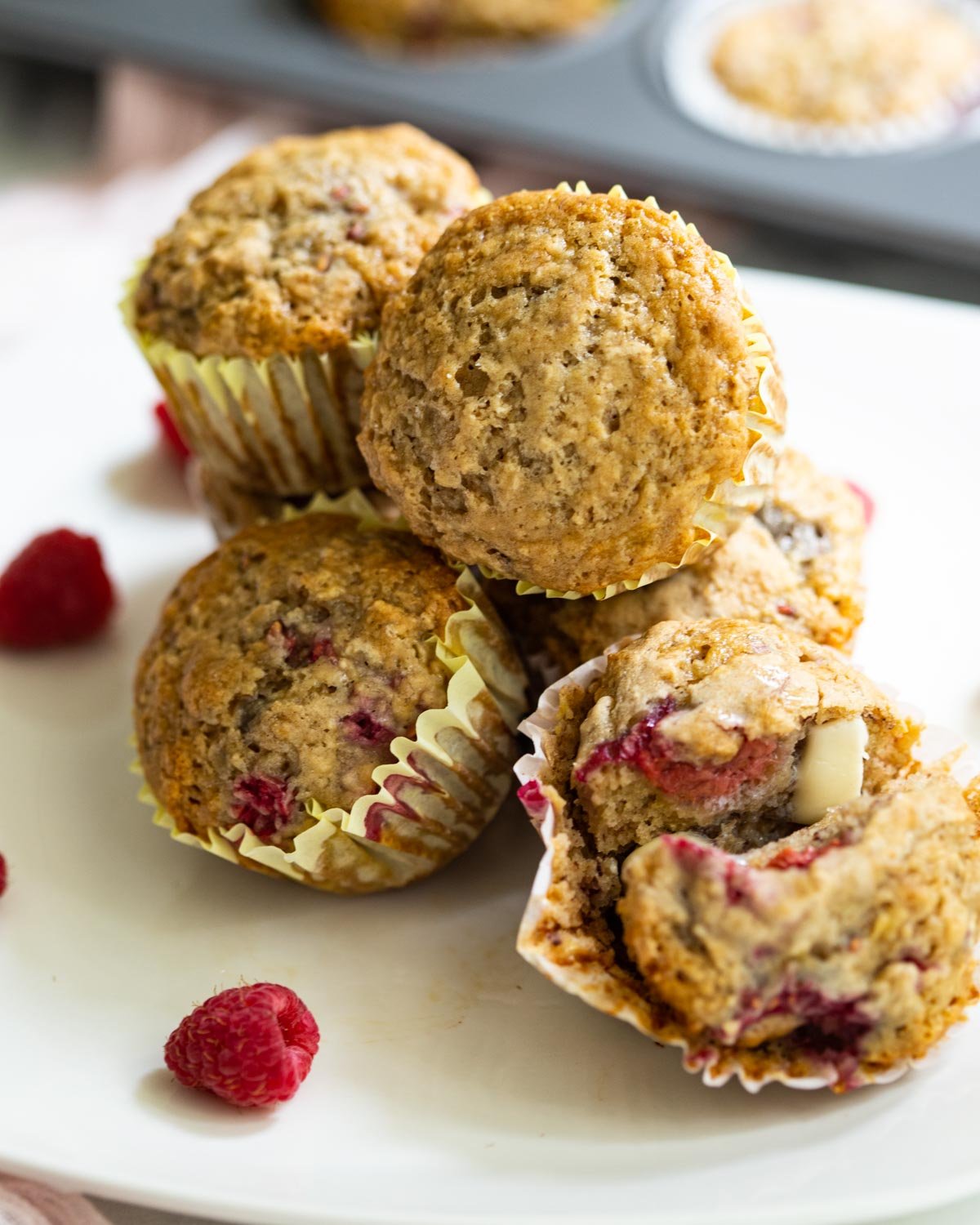
These simple vegan raspberry muffins are moist and sweet, without refined sugar or added oil. An excellent breakfast or quick snack!
11. Vegan Blueberry Muffins
Easy Vegan Blueberry Muffins are sweet, soft, and filled with blueberry goodness, perfect for breakfast or a healthy snack.
12. Vegan Buckwheat Muffins
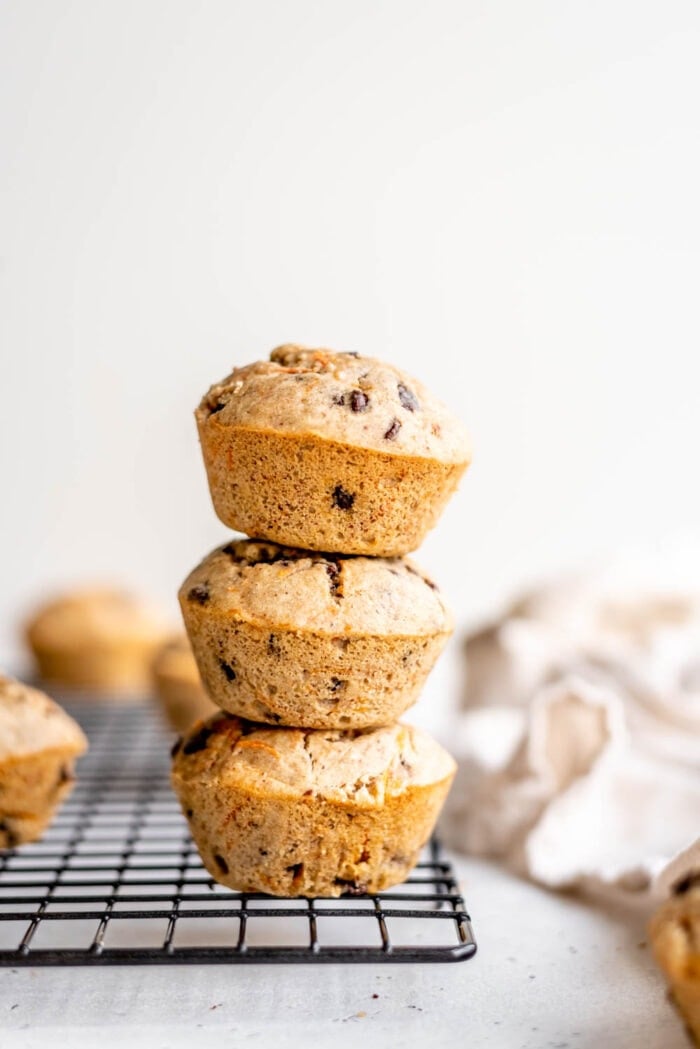
These vegan buckwheat muffins are refined sugar-free, oil-free, gluten-free, and easy to customize with different add-ins. Make them in one bowl in less than 30 minutes!
13. Morning Glory Muffins
This healthy, vegan Morning Glory Muffins Recipe is packed with fruits and veggies to please kids and adults! Great for a quick breakfast on the go, or lunchbox treat for kids.
14. Double Chocolate Vegan Muffins
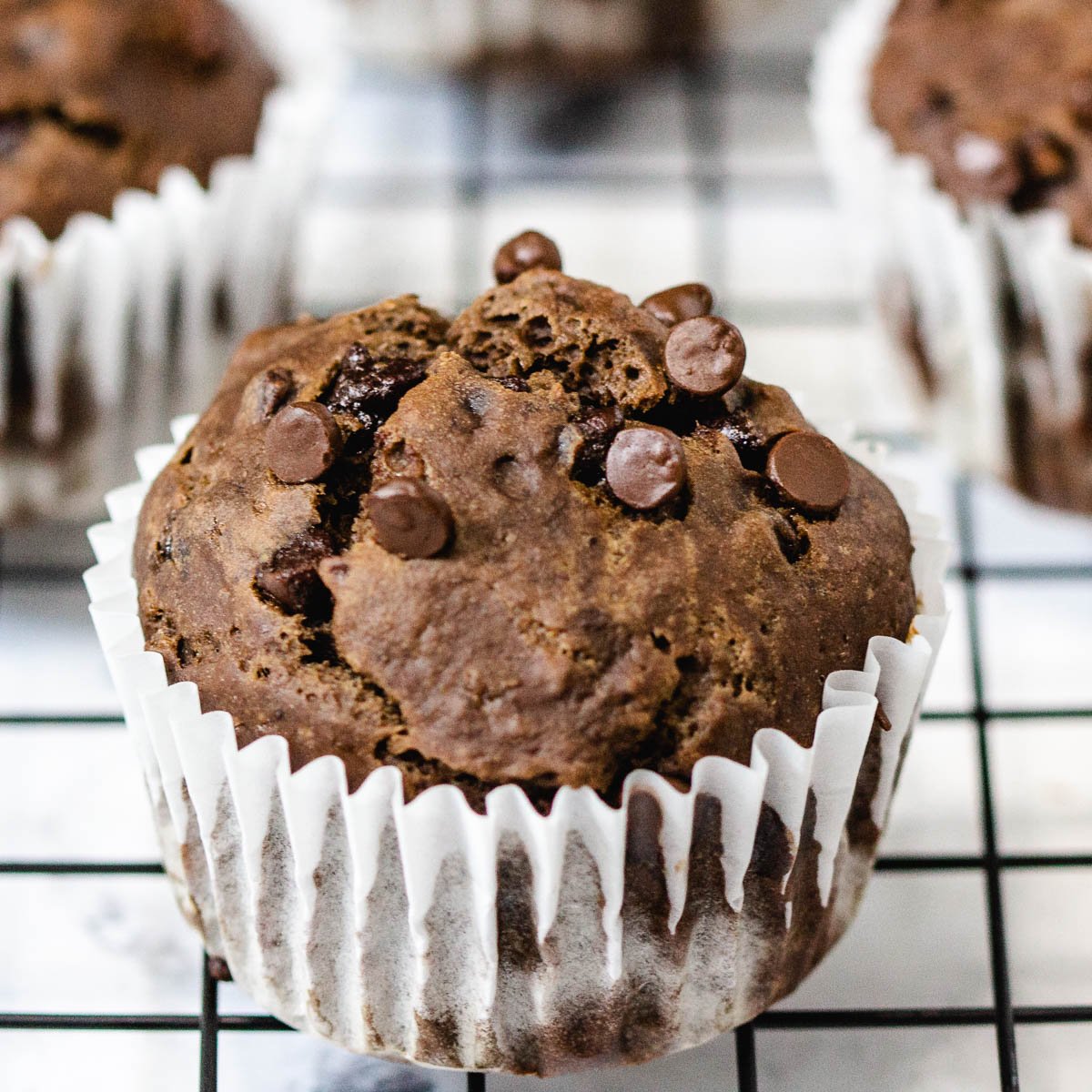
Take a bite of this double chocolate muffin! It’s moist and fluffy and made with whole-food natural ingredients! They are sweetened with banana and are whole grain! But you’d never know they’re healthy!
15. Vegan Oatmeal Muffins
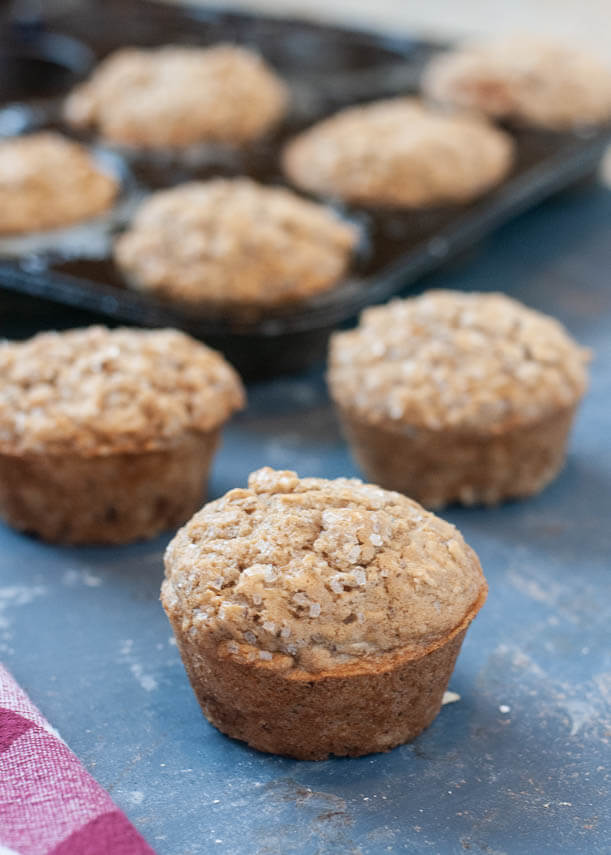
Gluten-Free Vegan Oatmeal Muffins make your house smell like a candle and taste even better. Sweetened with pure maple syrup, brown sugar, vanilla, and cinnamon, they’re perfectly sweet, and homey and make for a satisfying handheld breakfast.
16. Banana Peanut Butter Streusel Muffins
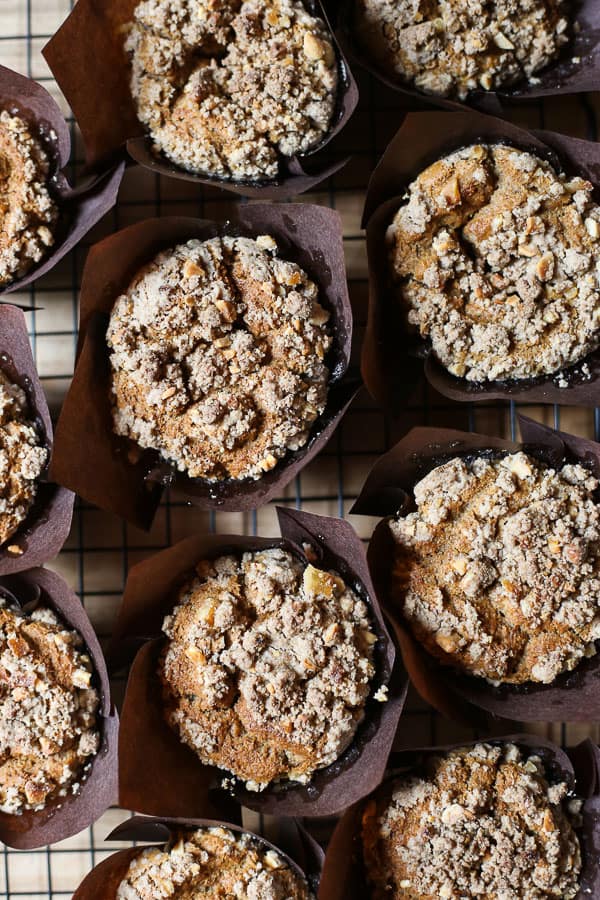
These Banana Peanut Butter Streusel Muffins are fluffy, generous, and richly flavored. What’s more, they are vegan and gluten-free to boot.
17. Cinna-Swirl Muffins (Vegan and Gluten-Free)
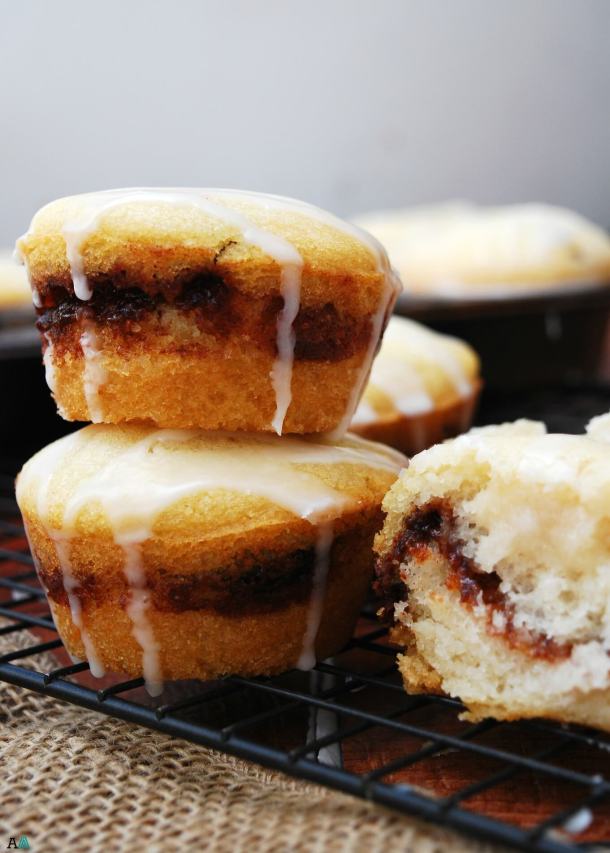
Basically coffee cake in a hand-held package. Soft, moist muffins with a river of cinnamon and sugar running through the middle and topped with a sweet glaze. This is the way to make a gluten-free & vegan breakfast!
18. Sweet Potato Bran Muffins
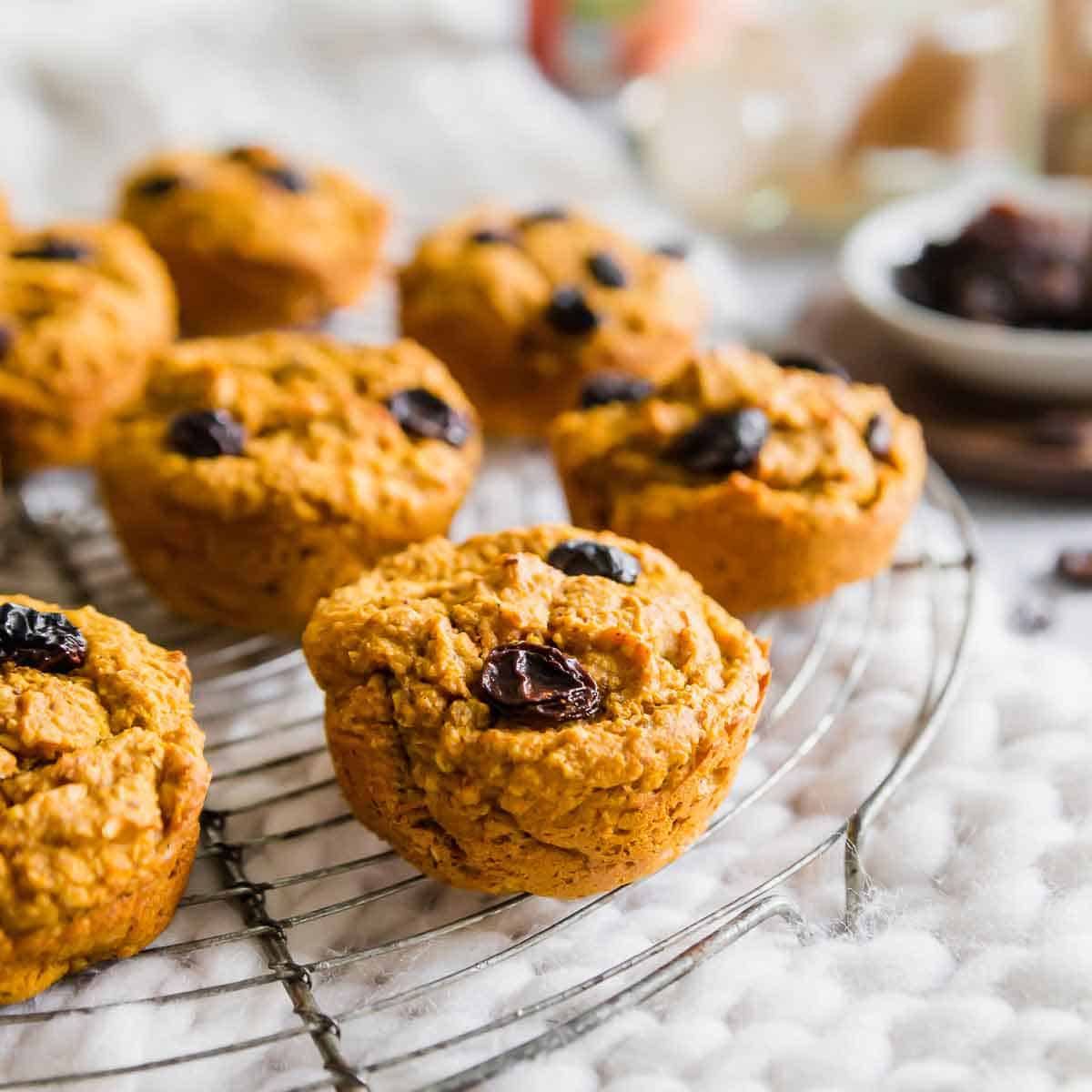
These gluten-free, vegan sweet potato bran muffins are studded with raisins for a healthy, hearty, nutrient-dense breakfast or snack.
19. Matcha Muffins
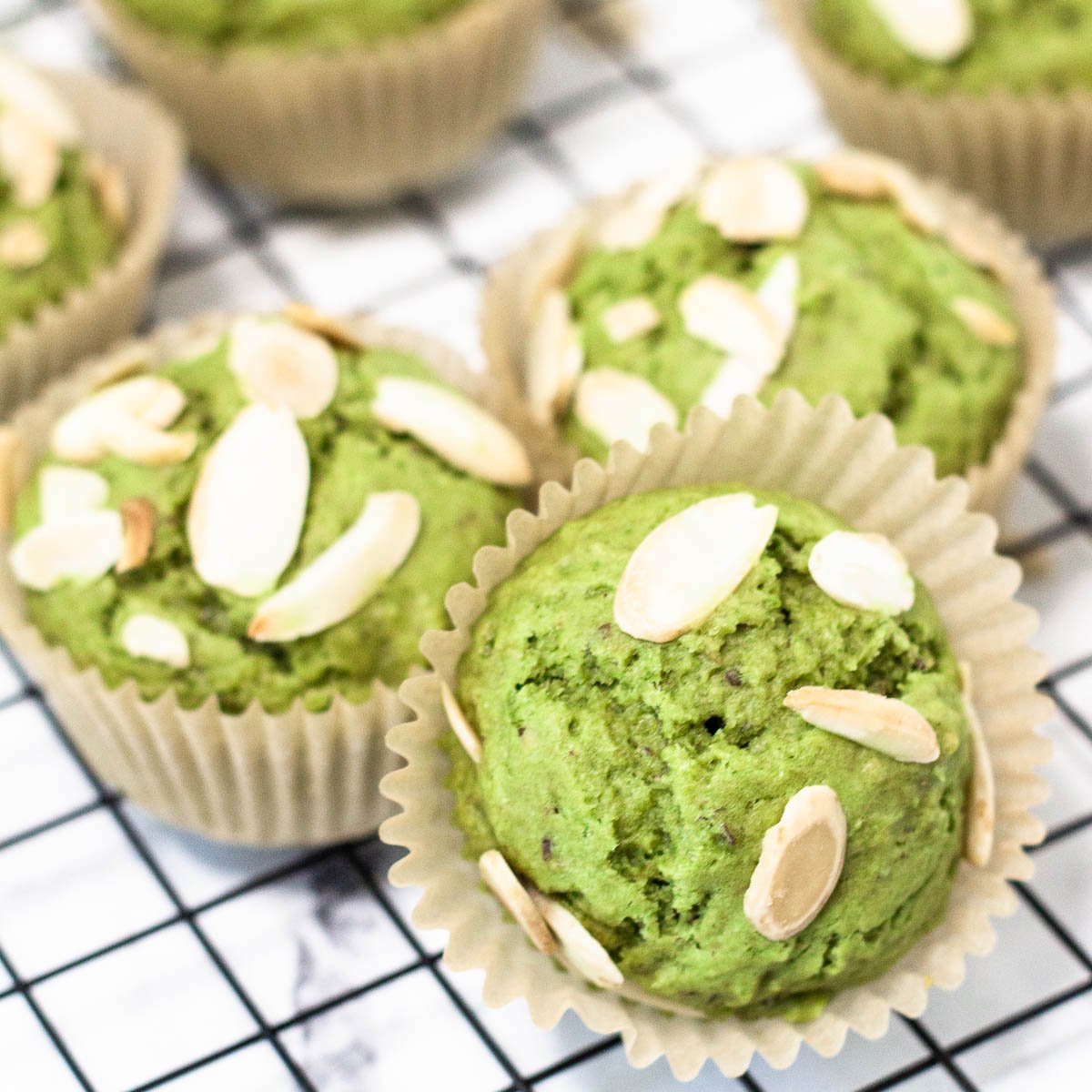
These simple one-bowl vegan matcha muffins are light and fluffy. They make for a simple breakfast or snack. Subtly sweet with a nice hint of green tea matcha flavor!
20. Savory Vegan Muffins
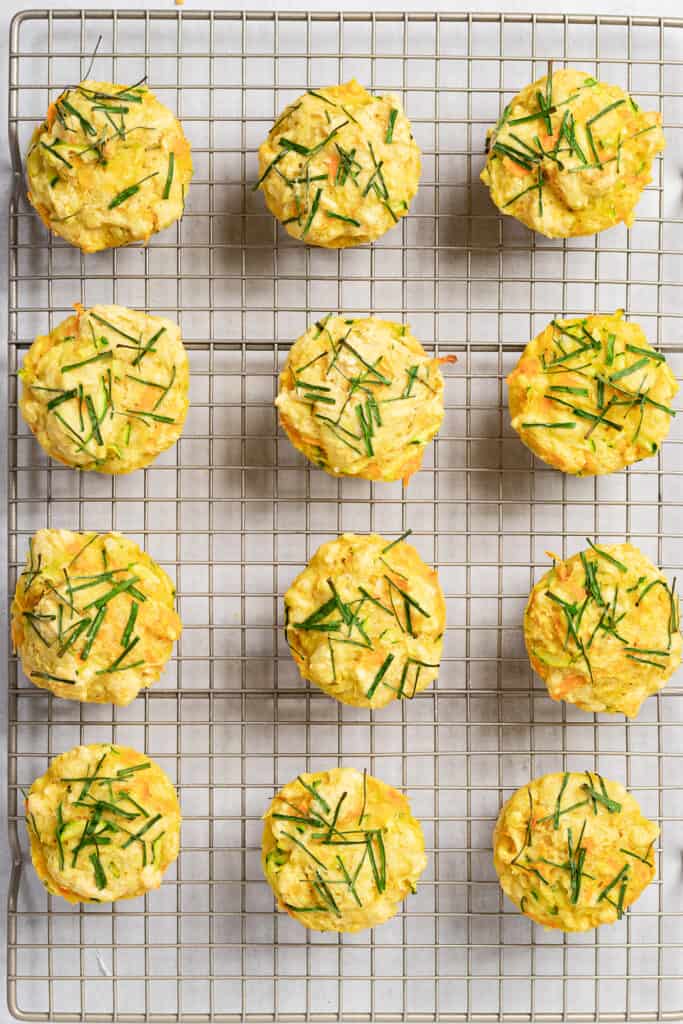
These Vegan Savory Muffins are the perfect breakfast for anyone who isn’t into sweet breakfasts or needs to switch it up.
21. Vegan Mochi Muffins

This super easy, no-mixer Vegan Mochi Muffins recipe is naturally gluten-free and the perfect sweet-but-not-too-sweet treat for those on a plant-based diet or GF diet. Once you’ve had them fresh from the oven, the crisp exterior and the soft, stretchy, chewy dough will leave you wanting more!
22. Lemon Cranberry Muffins
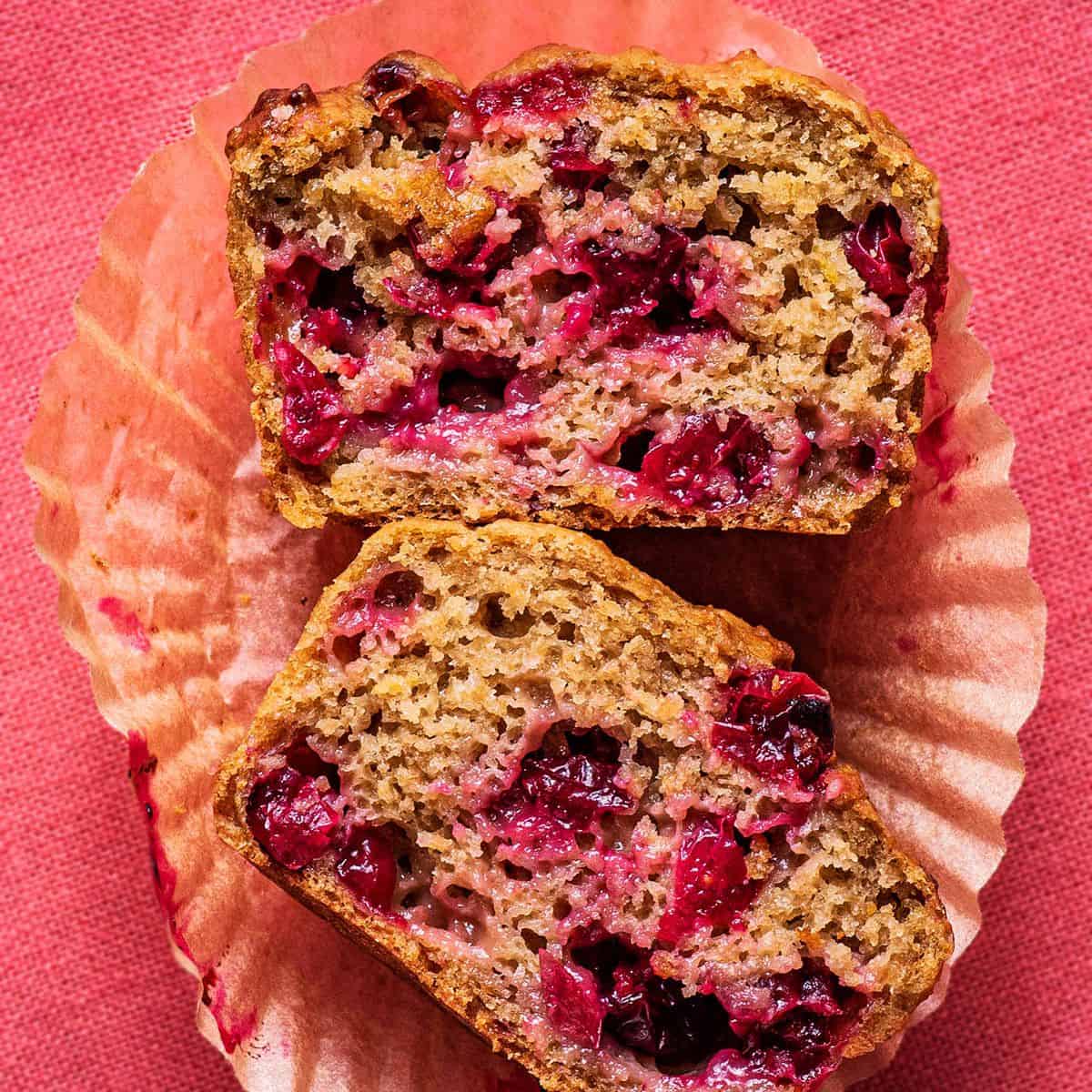
Easy vegan lemon cranberry muffins made with olive oil and dairy-free yogurt. These lightly sweetened muffins with a hint of lemon zest and lemon juice are a seasonal classic for a good reason.
23. Vegan Chocolate Chip Muffins
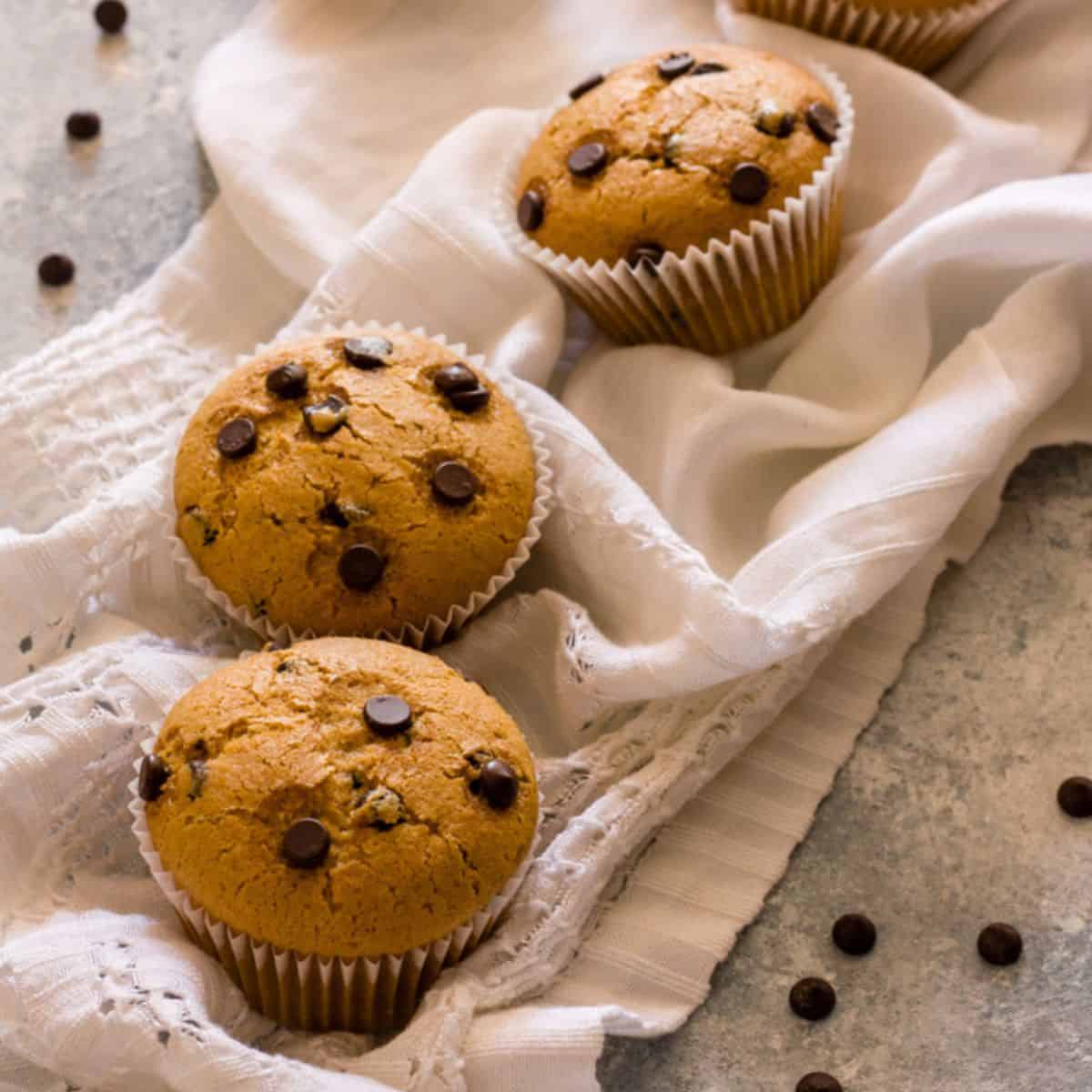
These muffins are soft, moist, and delicious! This perfect, one-bowl chocolate chip muffin recipe only requires a handful of ingredients and can be made quickly! They are the best vegan chocolate chip muffins!
24. Green Spinach Muffins
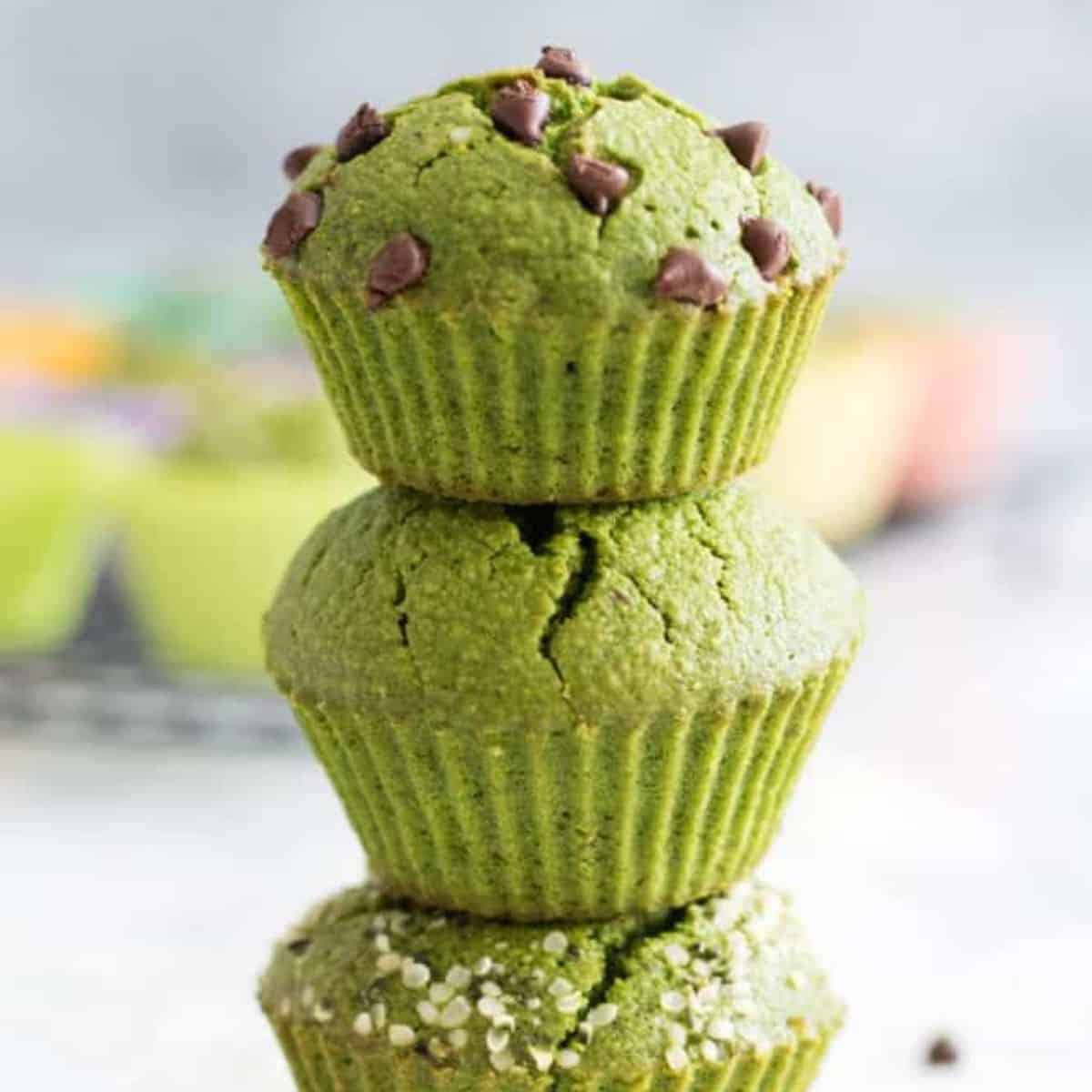
These light and fluffy breakfast muffins are loaded with fresh baby spinach for a natural green color. They are naturally sweetened and allergy-friendly, including gluten-free, nut-free, and 100% vegan (no dairy or eggs).
25. Banana Almond Flour Muffins
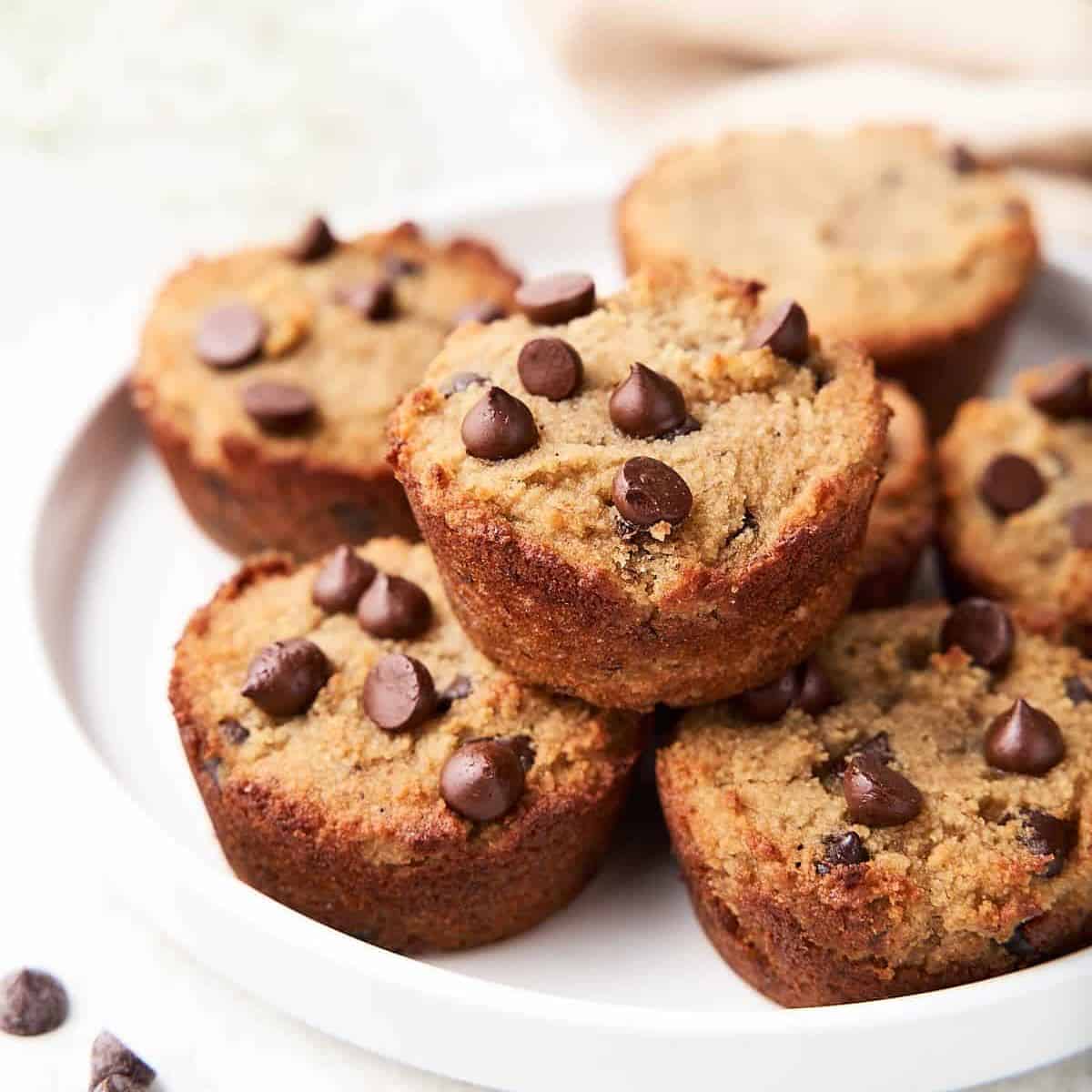
These banana almond flour muffins are an easy-to-make breakfast or dessert that’s gluten-free, low in carbs, and vegan! With just 10 simple ingredients, they’re tender, moist, and just the right amount of sweet. Serve them as-is, or with your favorite toppings.
26. Zucchini Apple Carrot Muffins
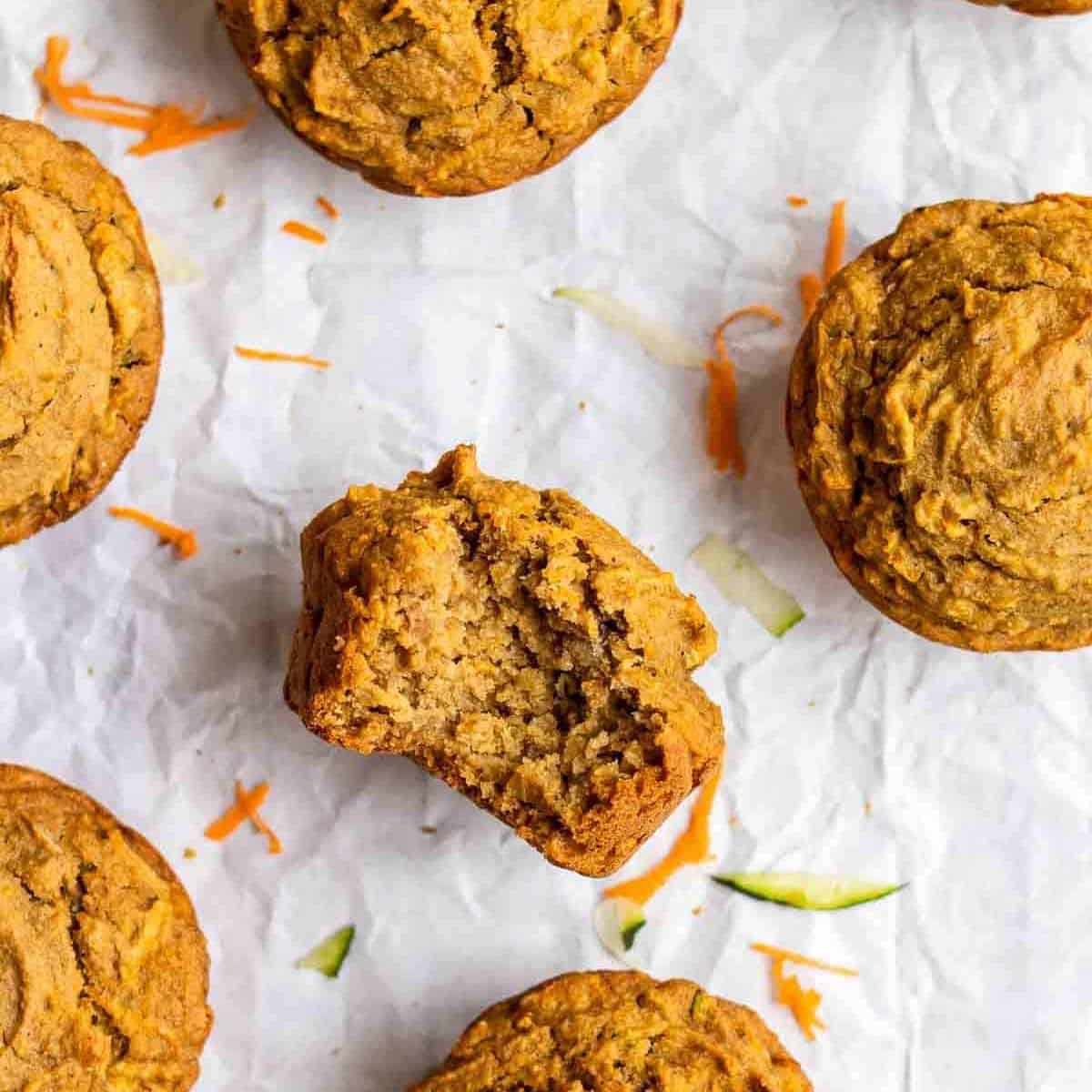
Moist and fluffy, these zucchini carrot apple muffins are great for breakfast or snacks! An easy one-bowl recipe that is ready in no time!
27. Vegan Strawberry Rhubarb Muffins
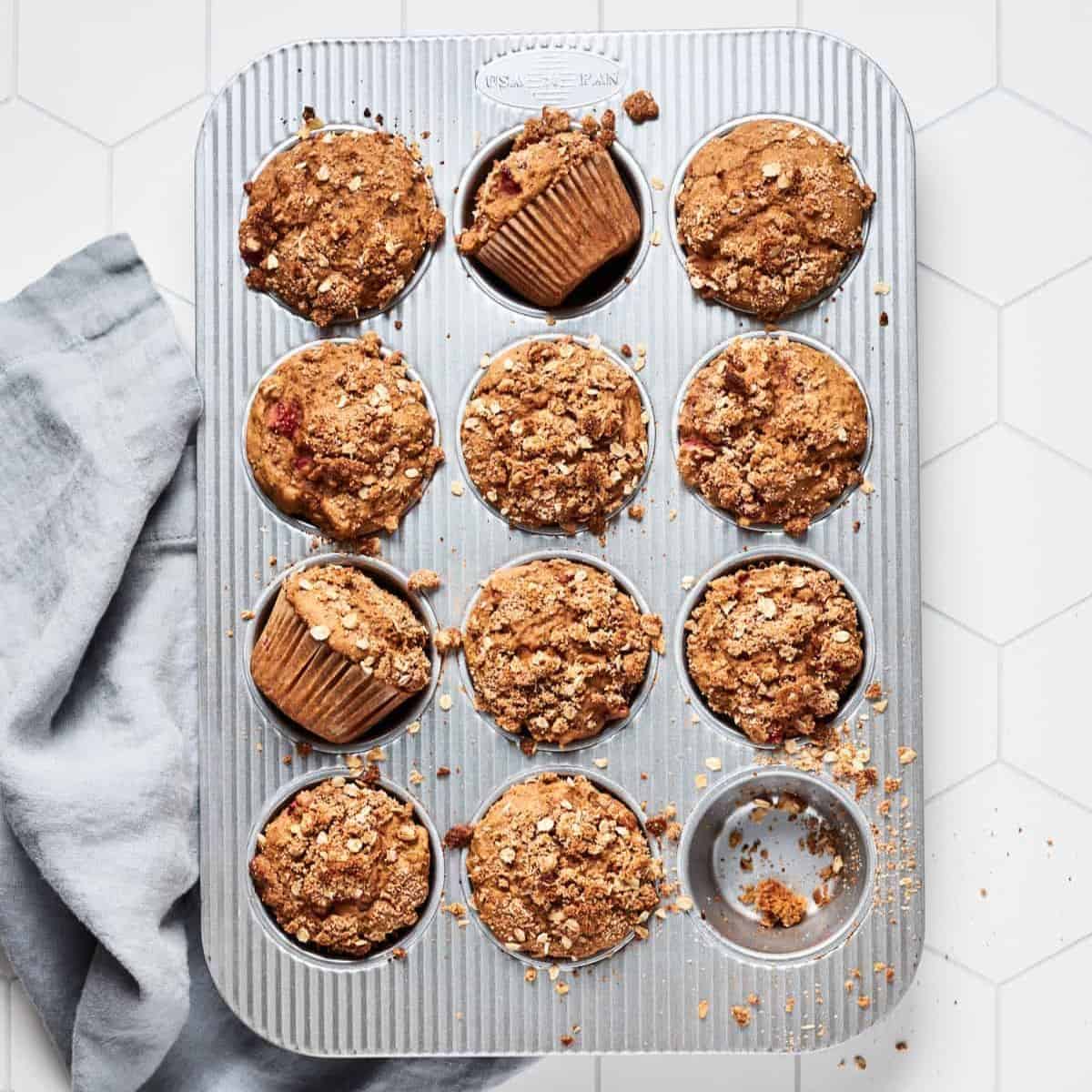
Are you looking for a tasty and vegan-friendly muffin recipe? Try these sweet and tart strawberry rhubarb muffins with a delicious crumb topping!
28. Sweet Apple and Banana Muffins
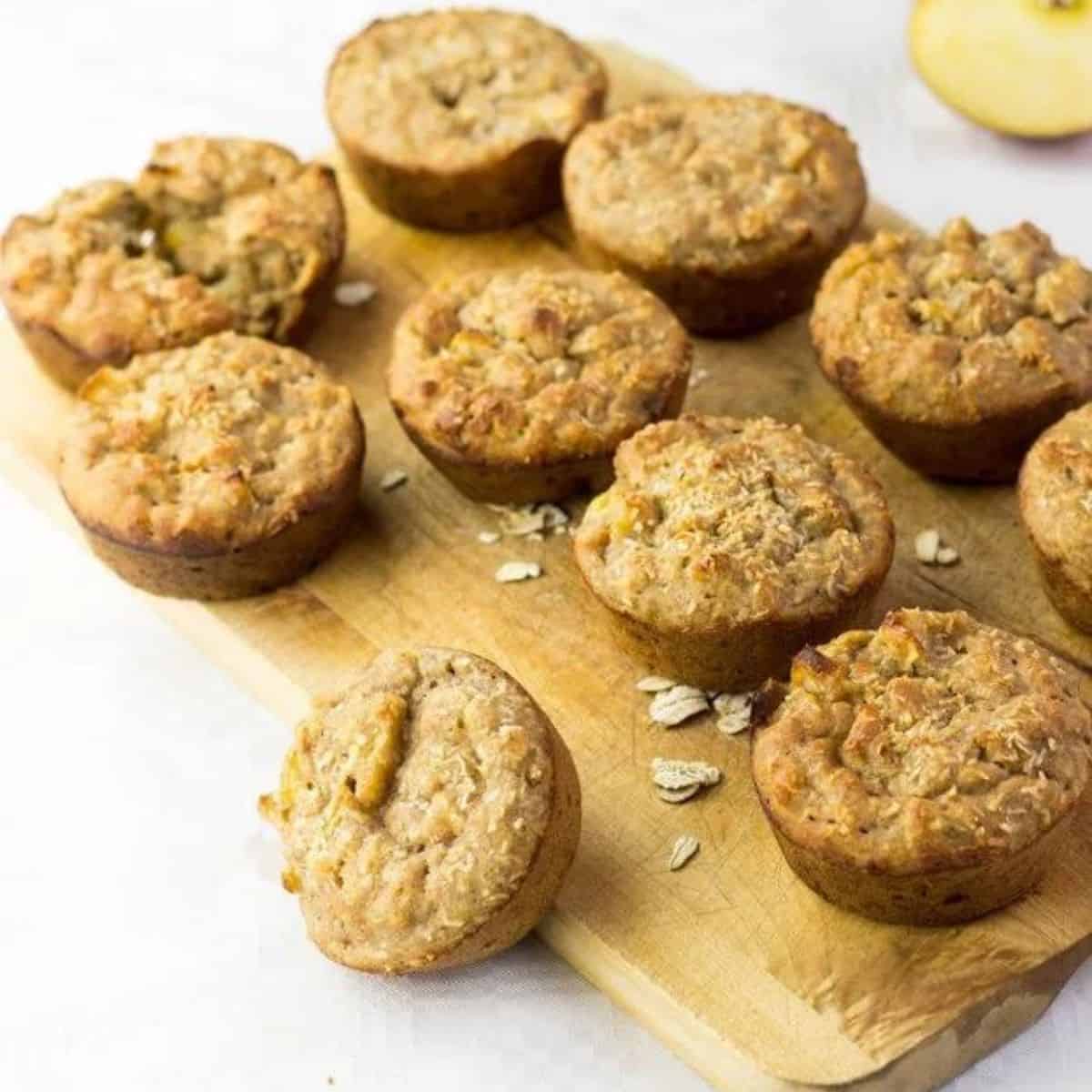
A super speedy muffin recipe that proves healthy, eggless snacks are far superior to any others!
29. Sweet Potato Blueberry Muffins
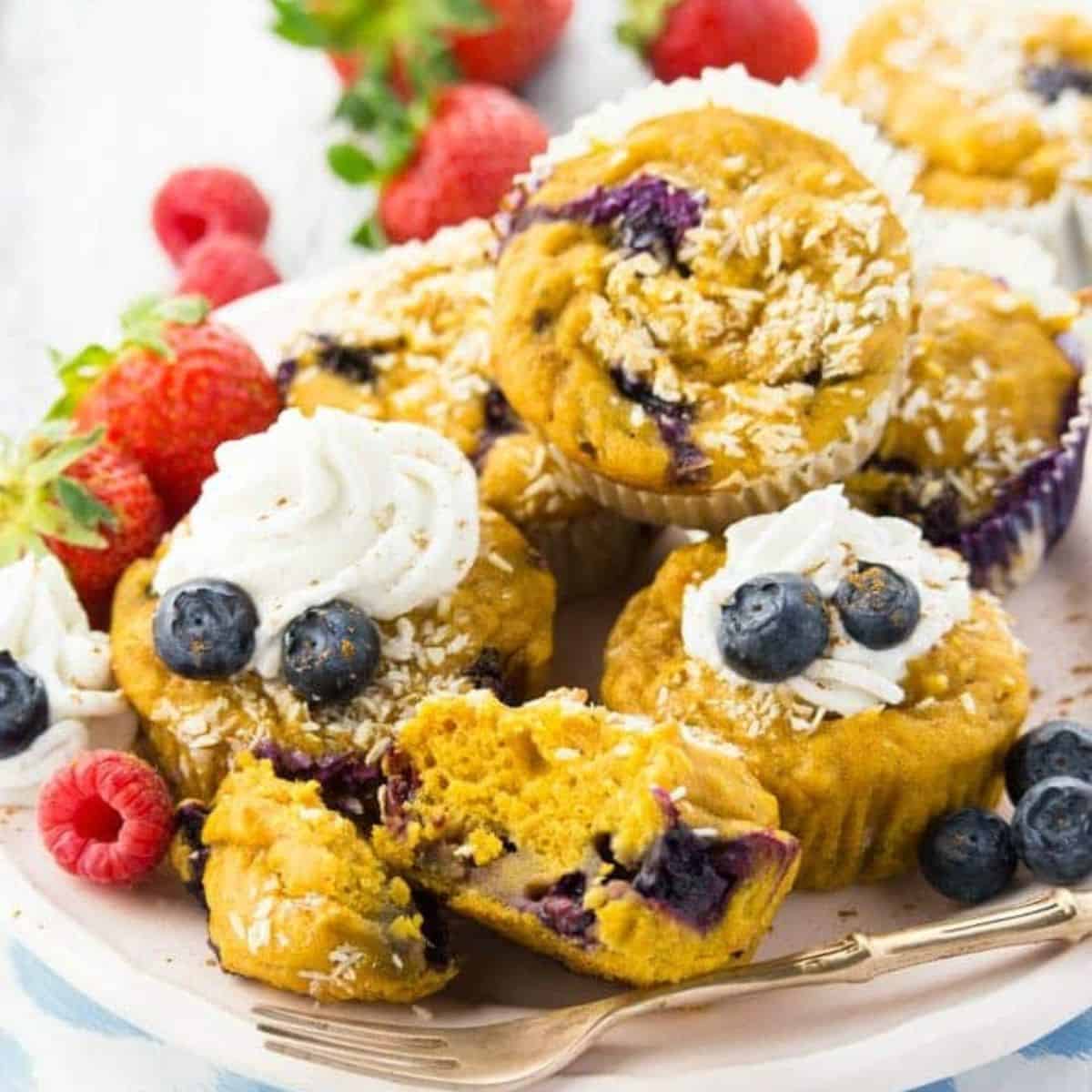
I hope these tips, tricks, and recipes have helped you create a light, fluffy, moist vegan muffin!
30. Oatmeal Protein Muffins
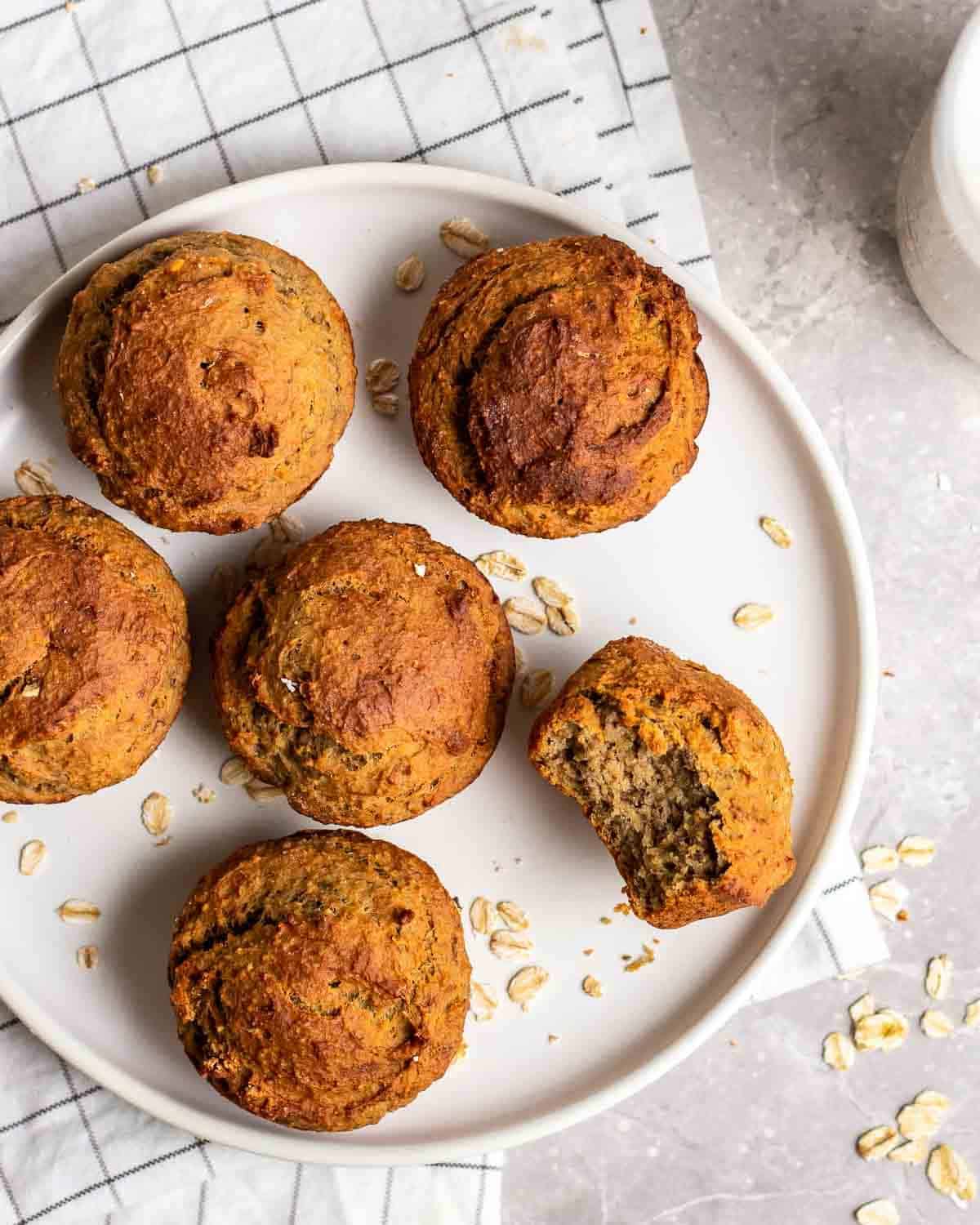
These vegan protein muffins are moist, soft, and perfectly sweetened. Packed with protein and slow-digesting carbs, they will keep you satisfied till lunch!
31. Maple Syrup Muffins
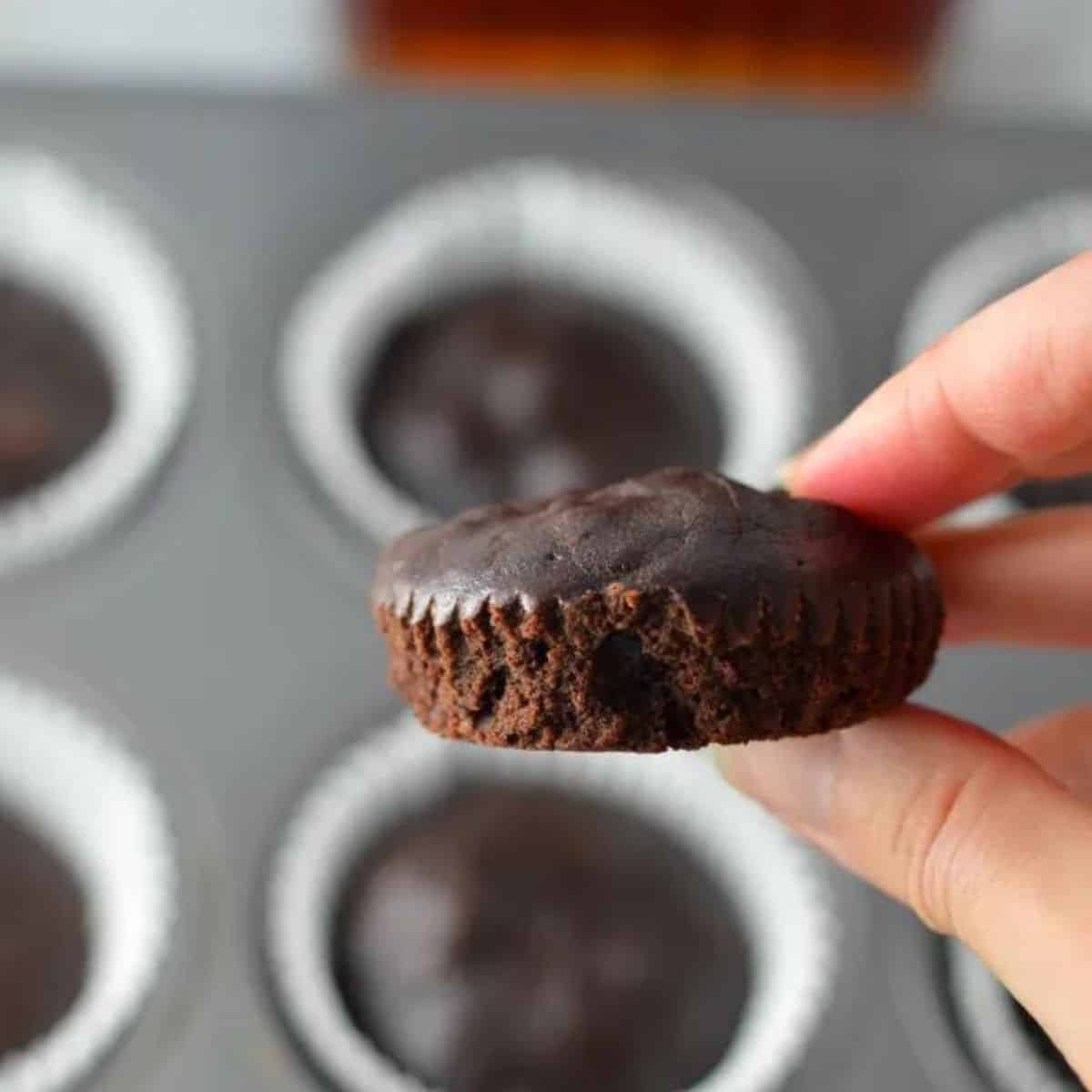
Simple Vegan Chocolate Maple Syrup Muffins that are easy to make and healthier than your average muffin. Dense and chewy, and refined sugar-free.
32. Banana Nut Almond Pulp Muffins
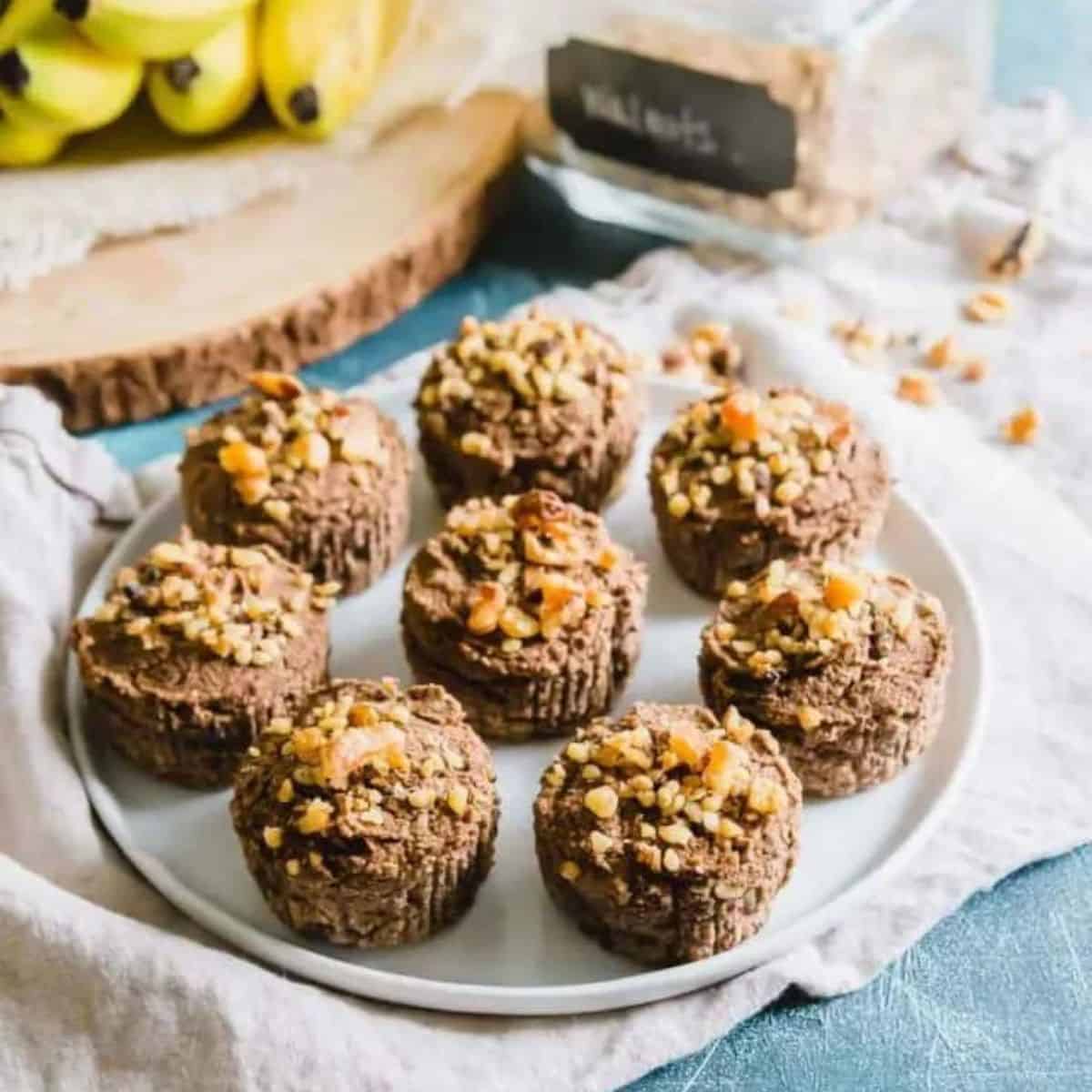
These banana nut almond pulp muffins are a great way to use leftover almond pulp from making homemade almond milk. They’re nutty, slightly sweet, moist, and tender muffins that make a healthy snack!
33. White Chocolate Raspberry Muffins
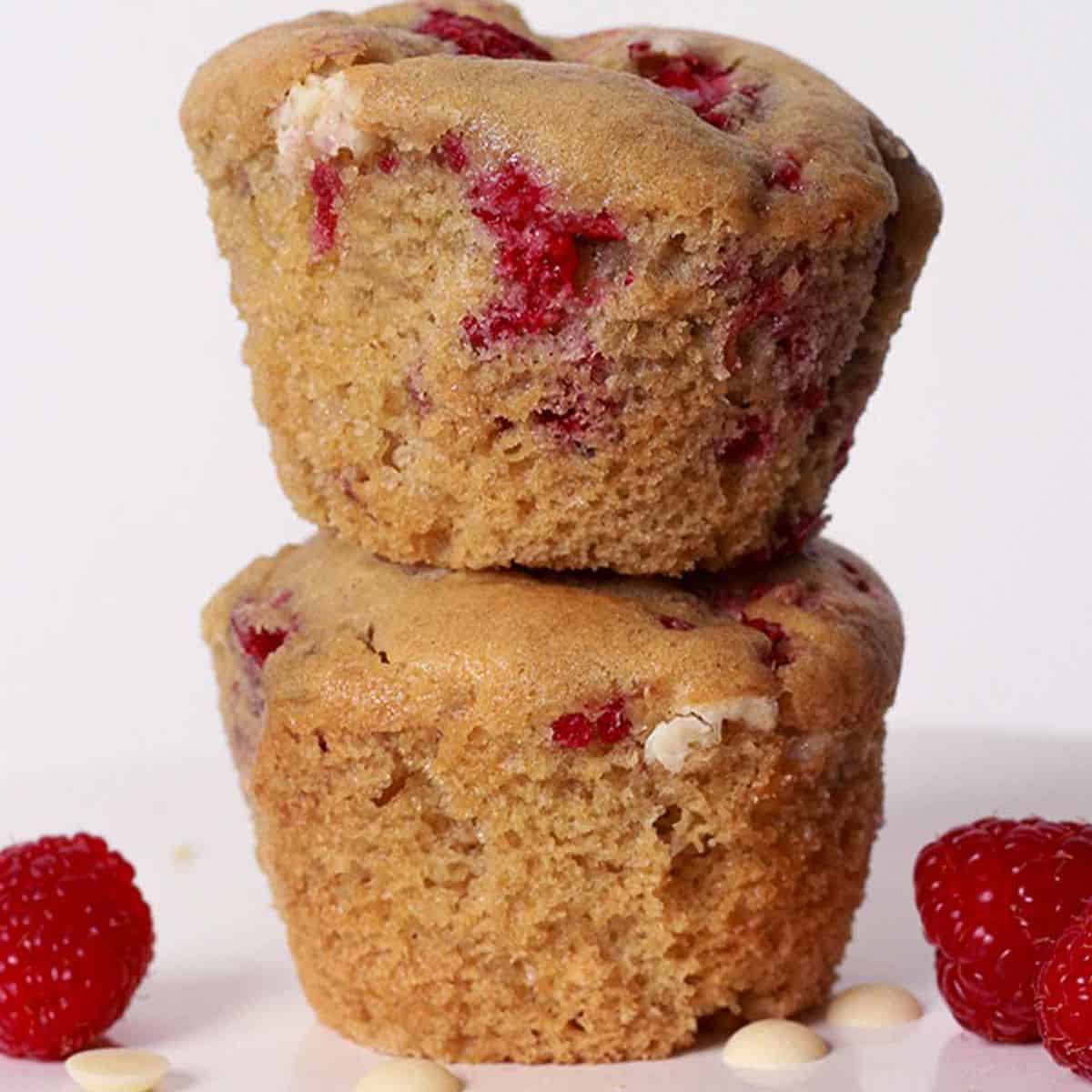
Tall, fluffy muffins filled with fresh raspberries and dairy-free white chocolate chips. This is an easy recipe that’s perfect for beginners
More Vegan Round-Ups!
You must use the category slug, not a URL, in the category field.Recipe

Basic Vegan Muffins Recipe
Ingredients
Wet Ingredients
- ½ cup sugar or sweetener of choice
- ½ cup vegetable oil or fruit puree
- 1 cup unsweetened dairy-free milk
- 1 teaspoon vanilla extract
- 1 cup fruit or other filling of choice
Dry Ingredients
- 2 cups all-purpose flour
- 2 teaspoon baking powder
- ¼ tsp baking soda
- ¼ teaspoon salt
Instructions
- Combine Wet Ingredients: Mix together the wet ingredients with the sugar. Stir until the sugar is dissolved.
- Combine Dry Ingredients-Sift the dry ingredients which include the flour, baking powder, and salt.
- Combine Wet and Dry Ingredients-Pour the wet ingredients into the bowl with the dry ingredients. Stir until just combined.
- Add Flavoring-Fold your mix-in or flavoring (blueberries, banana, nuts, chocolate chips, etc.)
- Fill Muffin Cups-Line muffin tins with liners. Fill muffin cups ¾ of the way full.
- Bake-Place muffins in preheated oven at 350 F. Bake for 25-30 minutes. Allow them to cool for 10 minutes.
Video

Notes
- Don’t overmix the batter or the muffins will become dense.
- Baking time will vary depending on the oven you own and your altitude. Watch your muffins around the 20-minute mark to check for doneness.
- Store the muffins in an airtight container on the countertop.
- Don’t refrigerate your muffins or they will dry out.
- The muffins will keep at room temperature for 3-4 days.
- To freeze, wrap each muffin in plastic wrap, then place them in a freezer-safe airtight bag. Freeze for up to 1 month. When ready to eat, place on the countertop at room temperature to defrost.



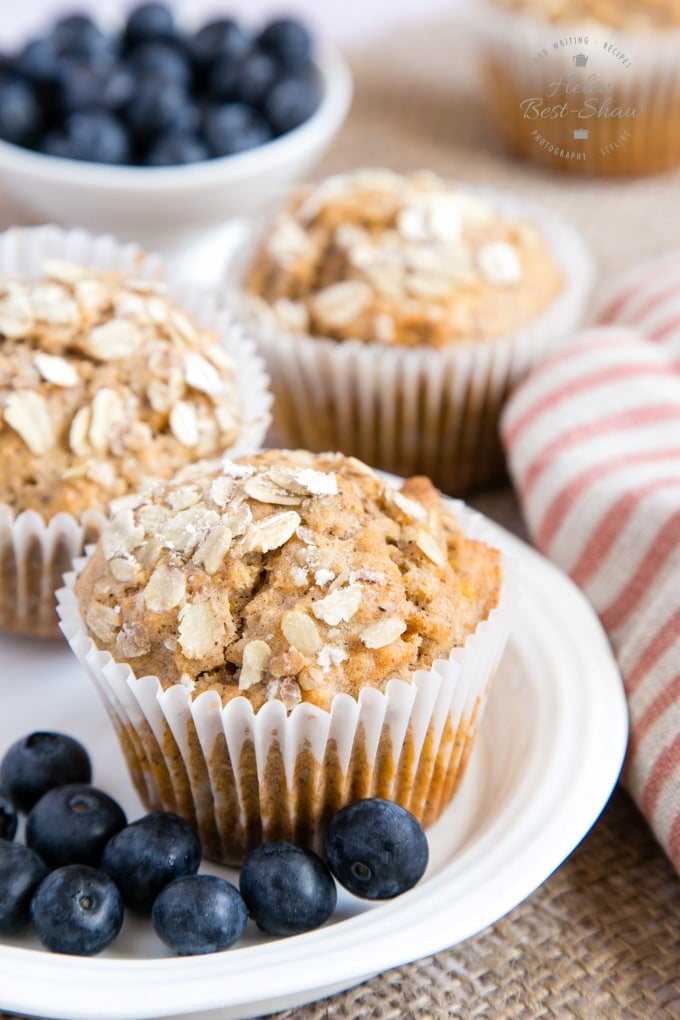
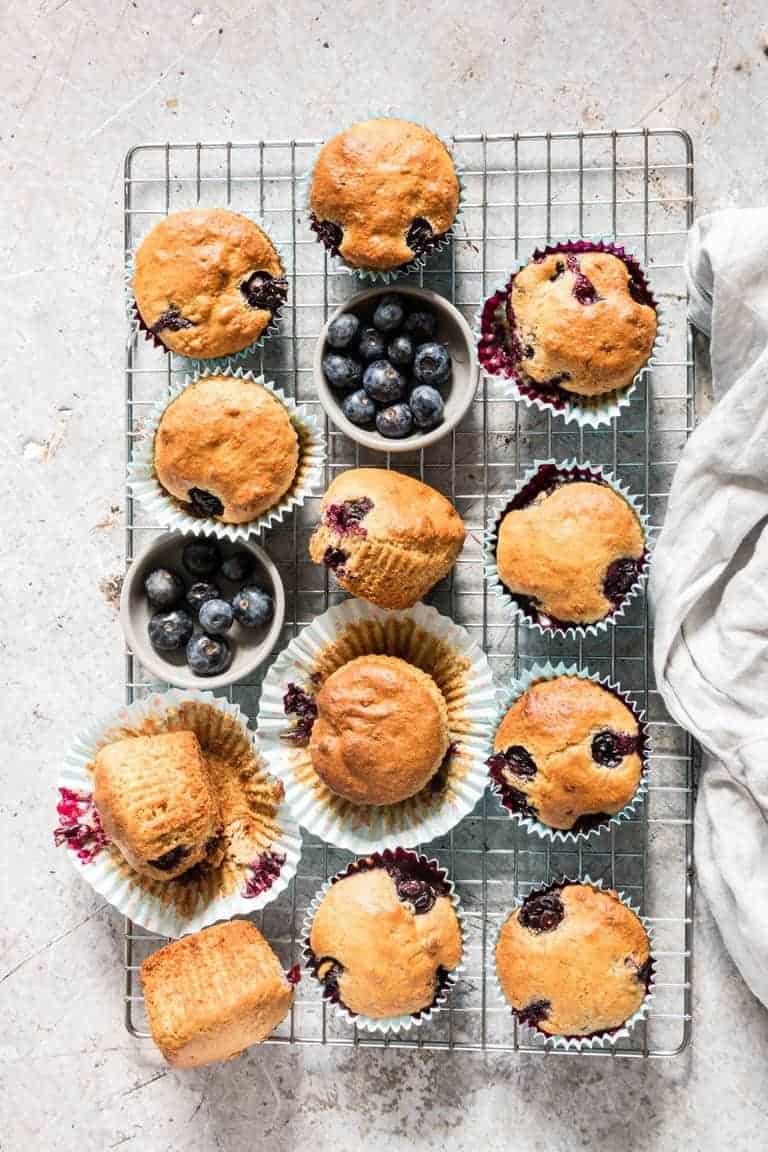
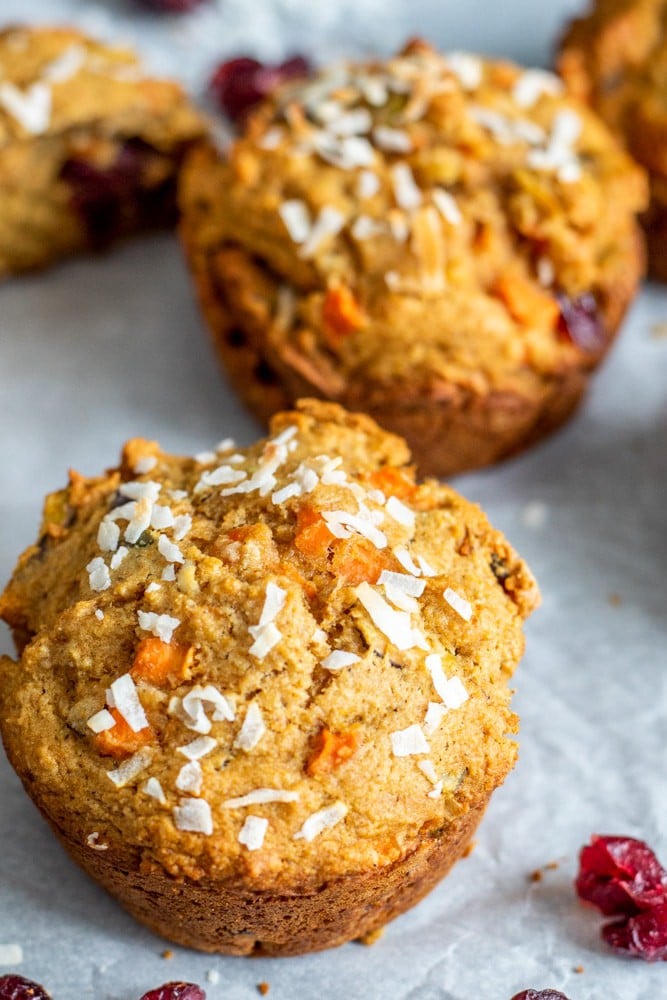
Amanda Wren-Grimwood
What a good idea to have a recipe that you can tweek for every occasion. Makes cooking so much easier when you have a reliable recipe.
Andrea
Great roundup of recipes! We have our eyes on a few of these to make and freeze for breakfasts.
Gloria
It’s hard to resist a freshly baked muffin. Great for breakfast, snacks and dessert too. I would love one right now with my coffee. Lots of great choices here.
Amy
These are so easy and fun to make with variations. It’s the perfect base muffin recipe.
Sisley White - Sew White
With so many vegan friends I’m always looking for new recipes to make for them and I adore muffins. Great recipe
Cam
This is an amazing collection of recipes and I really appreciate all of the helpful tips and tricks for making them perfectly every time!
Andrea
I’m a big fan of all muffins and all of these look marvelous. I also appreciate all your tips for making the best muffins possible. Will be using these next time I make a batch.
Sarah
Wow, what a great resource! I love learning about the history of muffins, I never knew we’ve been making muffins since the 10 century 🤯. Great post, thank you for sharing.
Alison Corey
Thank you! It’s so much fun learning the history of recipes!
Pris
What a nice collection of little cakes for every occasion! I’m bookmarking this for quick reference. 🙂 I think the blackberry and the sweet potato ones are my favorites, but will have to try them all!
Alison Corey
Thank you! Hope you enjoy those blackberry and sweet potato muffins!
Kristin
I definitely think that the line between muffin and cupcake gets a little blurred sometimes! But either way they are delicious, haha! I can never refuse either one. This is a great article and I love all the muffin options you included. I’m going to eat my way through this list!
Alison Corey
I know! Both cupcakes and muffins are simply irresistible!
Shelley
This is such a fantastic post – really informative, especially the tips about the importance of using the correct sugar and whether or not you should sift the flour. So many little things really can make a difference when it comes to the science of baking – and when you do it right, vegan muffins can be so outstanding! Your list of beautiful recipes to try certainly proves the point! 🙂
Alison Corey
Thank you so much! Baking is such an art, especially when making so many substitutions for vegan baking! Hope these tips are helpful!
Katherine
Wow, this post is a masterclass in vegan muffin making! And so many great recipes. Thank you!
Alison Corey
Thank you so much! Glad you enjoyed learning about muffins!
Georgina
What a brilliant post! Thank you for including my recipe!
Alison Corey
Thank you for your contribution!!
Holley
So many vegan muffin recipes here! Super moist and delicious choices!